- info@naturebylennart.com

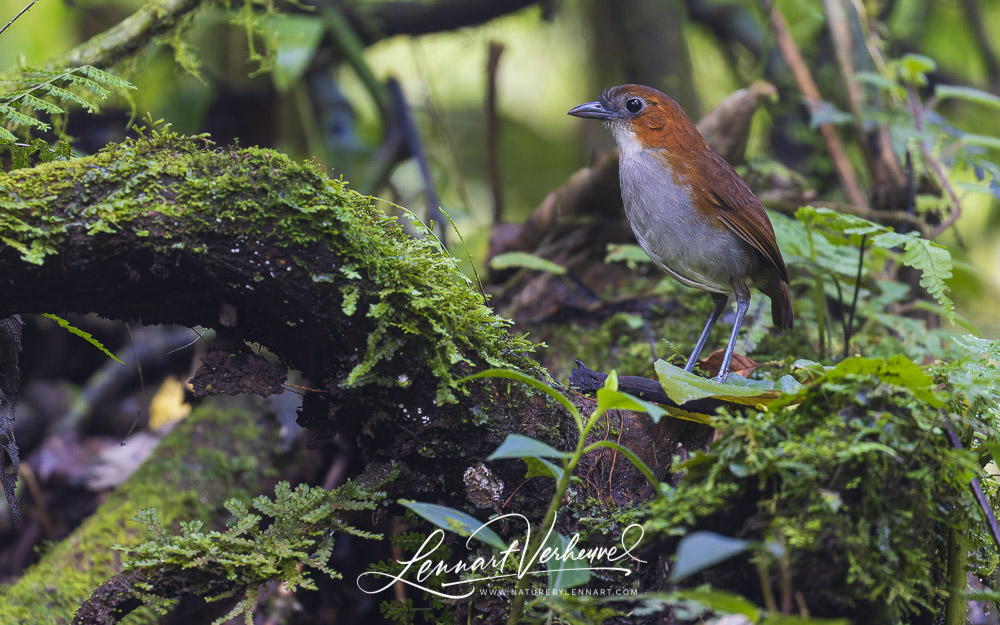
Antpittas are often described in field guides as a ‘plump ball on sticks’ which is an accurate description. Antpittas have in common that they are indeed like little featherballs on two legs that can sit very still. As a result, antpittas are also difficult to find and it is quite an achievement if you as a birdwatcher manage to pull one out of the forest. Some antpittas are known for not being so difficult to find, but some are so reclusive that they have never even been photographed in the wild. The frustrating thing can be that many antpittas often do make themselves heard. Just so you know they are there, but you don’t get to see them! However it is well worth the effort to try to find them because despite their similar form they can have very different plumages with beautiful patterns and colours. During my trip to Ecuador in 2021 I became acquainted with this species group.
Ecuador could be called the cradle of anti-pitta viewing thanks to the pioneering work of Angel Paz. It was he who began investing time in 2005 to make a Giant Antpitta get used to him. This used to be a mythical species that hardly anyone ever saw. Angel Paz managed to get the bird to appear on call to receive its daily worms. The Giant Antpitta was called Maria. After the Giant Antpitta, he managed to tame even more species, making it possible to see five species of antpittas at Paz de las Aves. They all have their own name too. Angel also shared his knowledge with other places, which means that many more antpitta species are now more or less available on demand. Ecuador is still a country where many antpitta species can be found, but Colombia is catching up fast. The story of Angel Paz can also be read on his website where you can also immediately book a stay yourself!
So during my time in Ecuador, I definitely wanted to pay a visit to Paz de las Aves. I went for two days which meant I would go bird watching in the afternoon, then sleep the night and go out the next morning for the antpittas. A bear messed up my plans though!
I went to bed quite late because we wanted to watch owls. Unfortunately they didn’t show up. The next morning I was awakened by a knock on my door. I woke up very sleepy and it turned out that I was expected much earlier than the time I thought I was told the previous evening! As quickly as possible I got ready and went with Angel. Unfortunately because of this I probably missed Dark-backed Wood Quail which I only heard but didn’t see. I still don’t understand where it went wrong because I thought I had clearly heard the time from Rodrigo Paz. I had even set the alarm a little earlier because I thought that time gave me some room to bird at the first light!
Anyway, Angel took me to the place where it’s possible to see Andean Cock-of-the-Rock. This species wasn’t a particularly high priority for me anymore after the great sightings I had in Peru. Adjusting the schedule a bit didn’t seem possible, so I just accepted my fate got some looks at the Cock-of-the-Rock. It was still no punishment of course to see this beautiful species again!
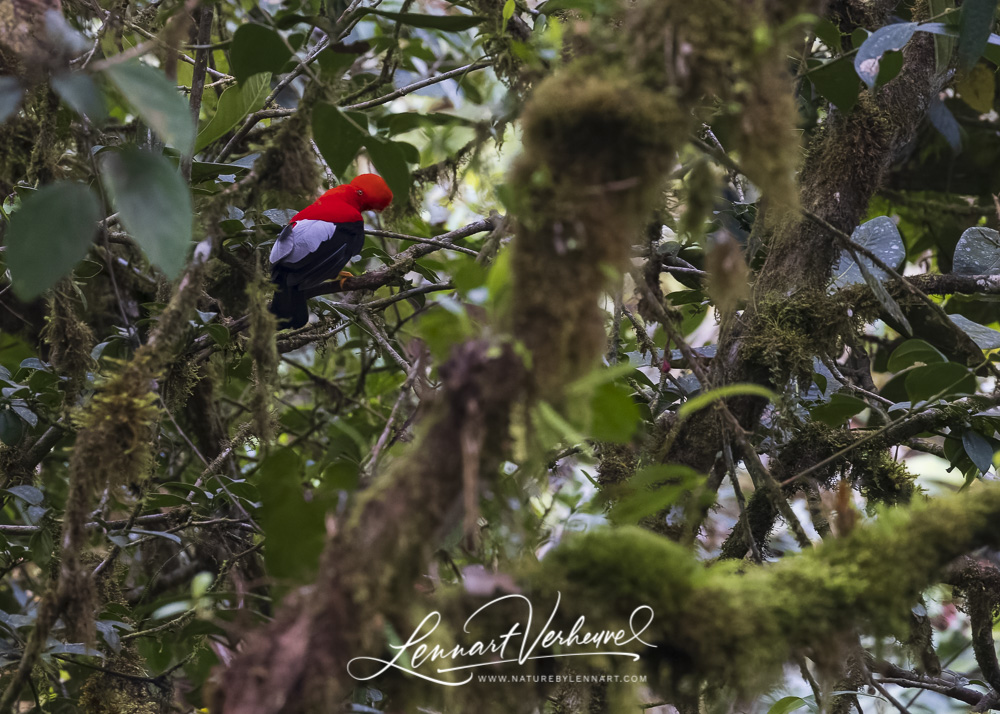
Andean Cock-of-the-Rock
From this spot, a female Golden-headed Quetzal was also clearly visible on a branch.
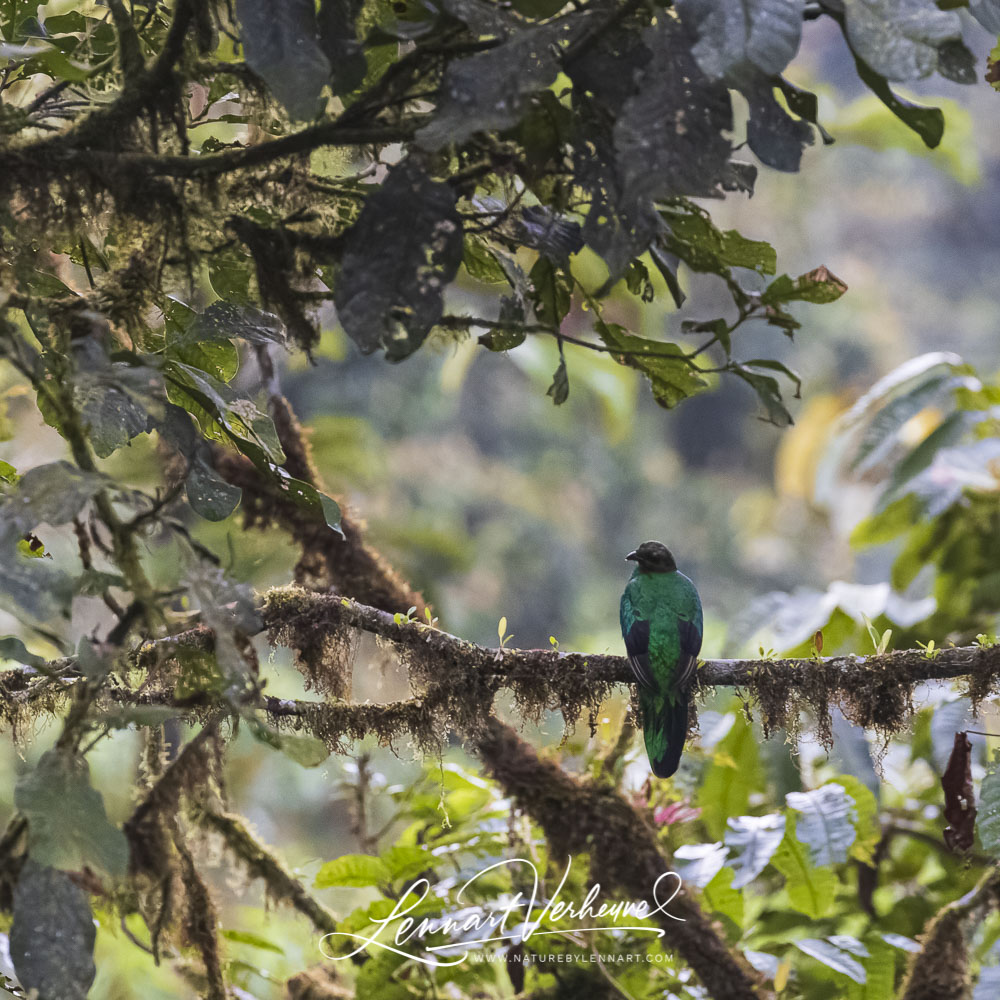
Golden-headed Quetzal
After we walked back to the road we saw a beautiful Scaled Fruiteater: the day was starting well after all!
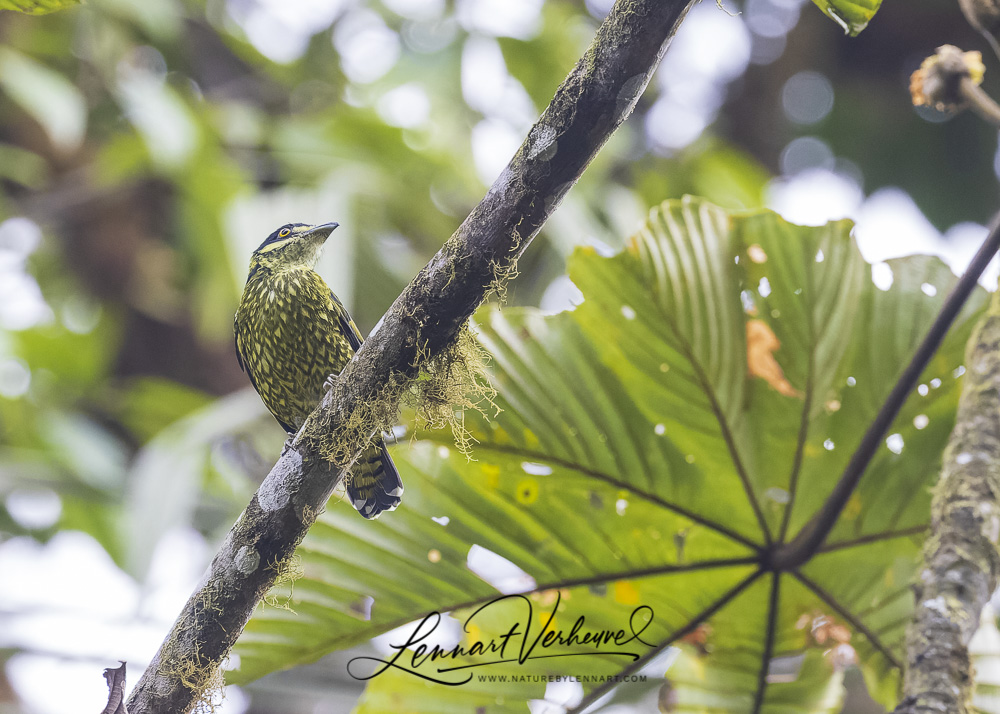
Scaled Fruiteater
However, the real deal was yet to come. We went looking for antpittas! I already understood that Giant Antpitta was not as easy to see as it appeared to be. It certainly wasn’t a species I was going to see for sure. Several birdwatchers had already returned disappointed when it turned out that Maria didn’t feel like it going out that day. For me this was the kind of antpitta I wanted to see. Giant Antpitta is huge for an antpitta. Where many antpittas vary a bit in size from Song Thrush to Robin, this species approaches the size of a jay. Bigger is always better of course!
So we went walking in the cloud forest and Angel went looking for an antpitta. I seemed to catch on to the fact that Maria hadn’t felt much like coming out lately, so I’m definitely not counting on this species anymore. I’m also under the impression that Angel is at the moment looking for another species and that Rodrigo is trying to locate Maria somewhere else. Angel struts up and down through the woods and I try to follow as best I can. Suddenly he beckons me. Cautiously I move towards him. Then suddenly I see a Giant Antpitta sitting quietly on a branch!
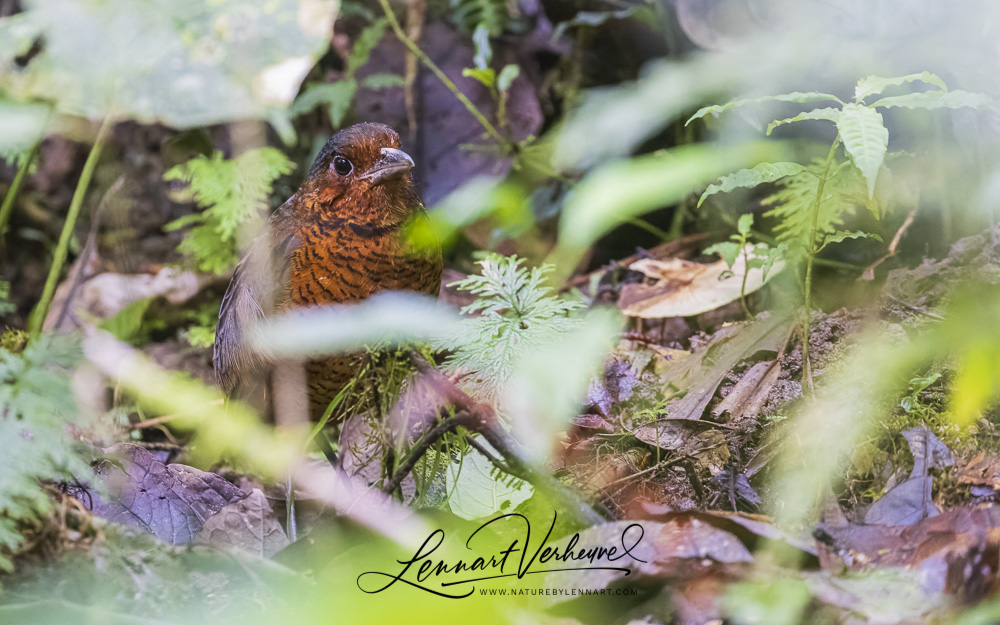
Giant Antpitta
I am very excited because I hadn’t counted on this species at this time at all! The Giant Antpitta is well hidden, but that does not last long. While throwing worms, Angel loudly calls out the name of the bird and that it can come out to eat: “MARIA, MARIA, COME COME!”. And indeed: obediently Maria hops on the selected branch and I can take pictures.
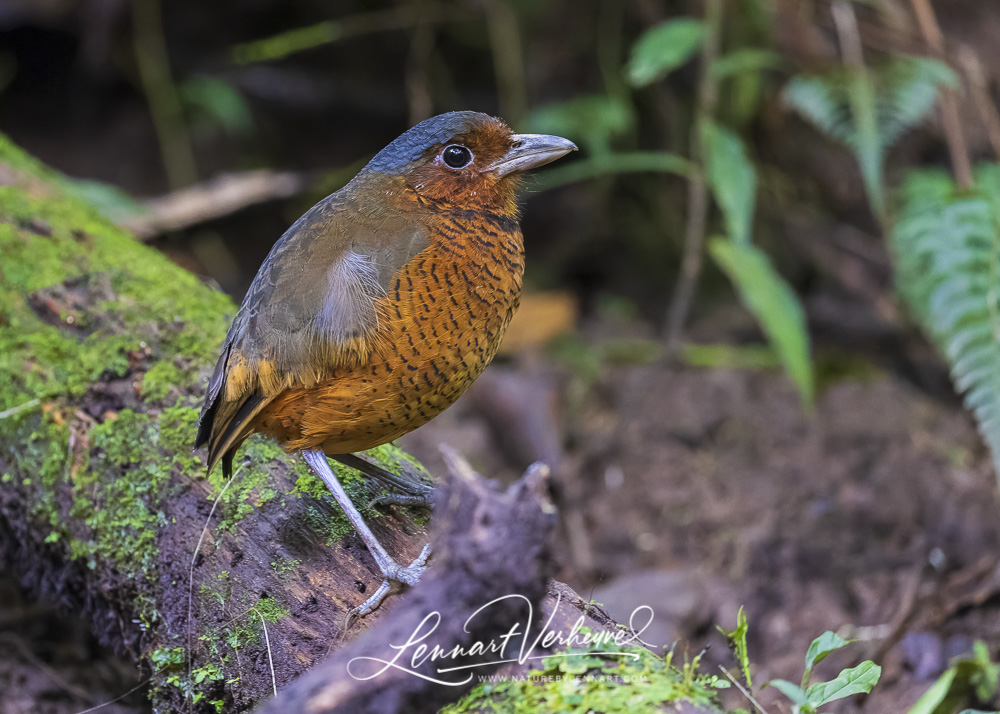
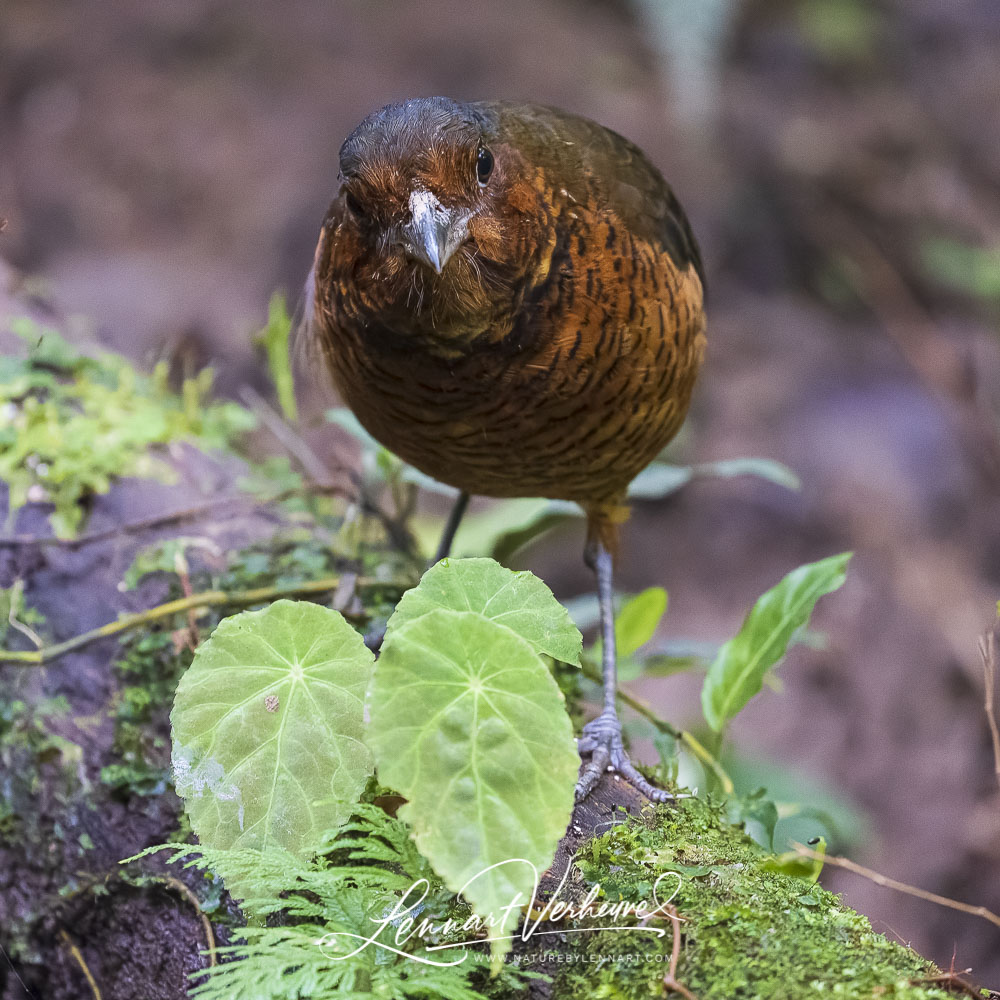
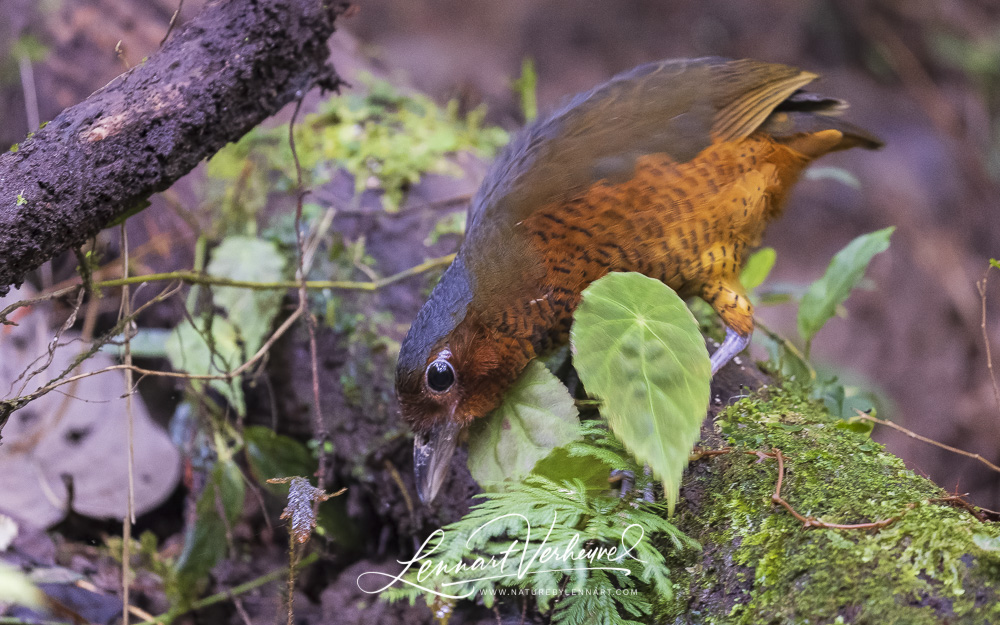
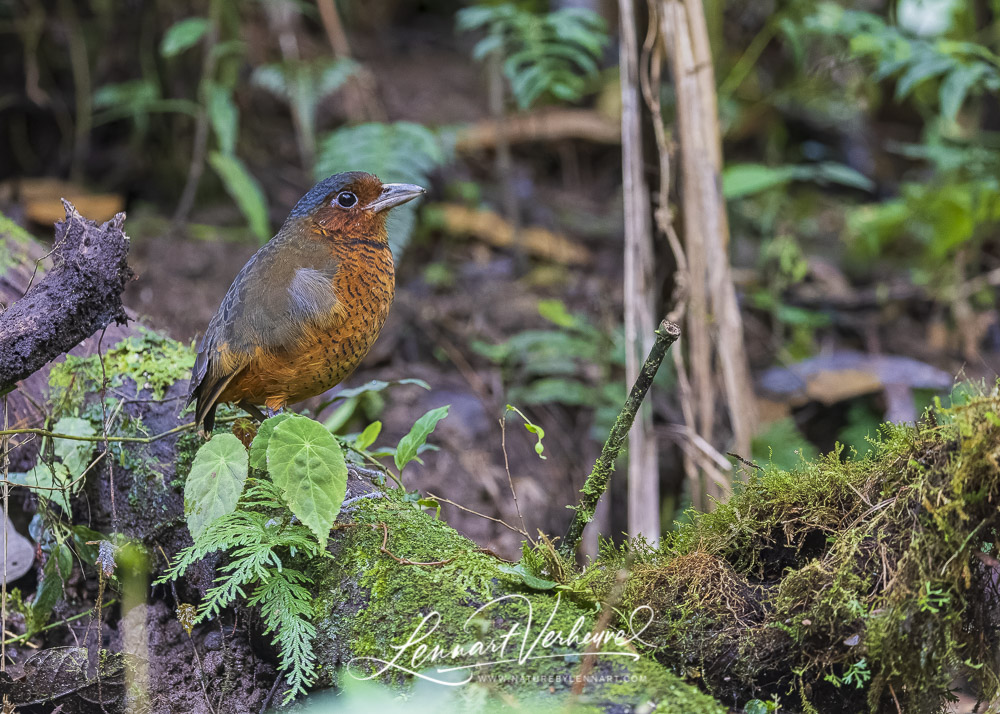
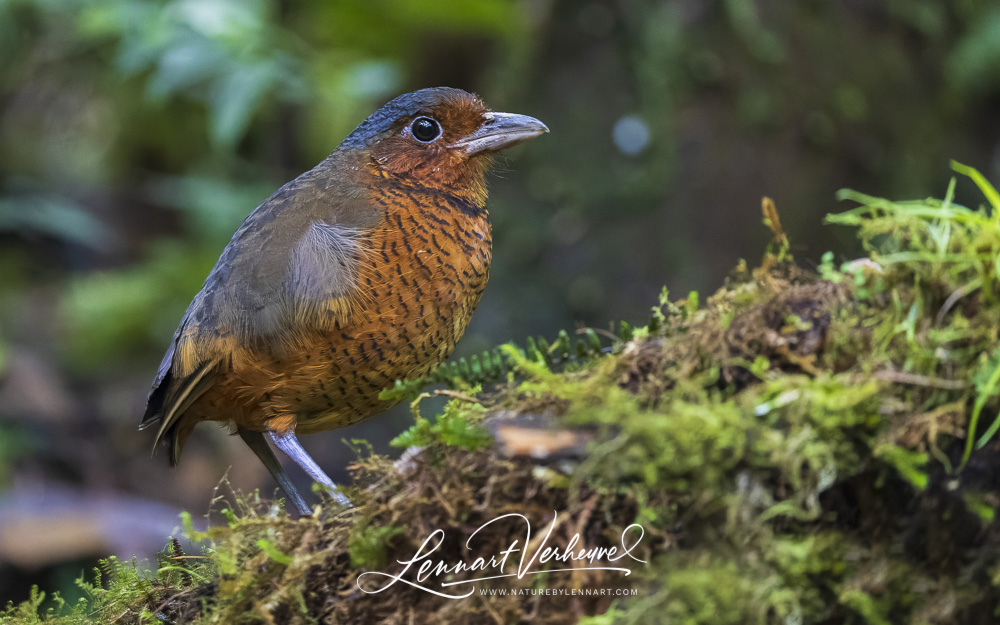
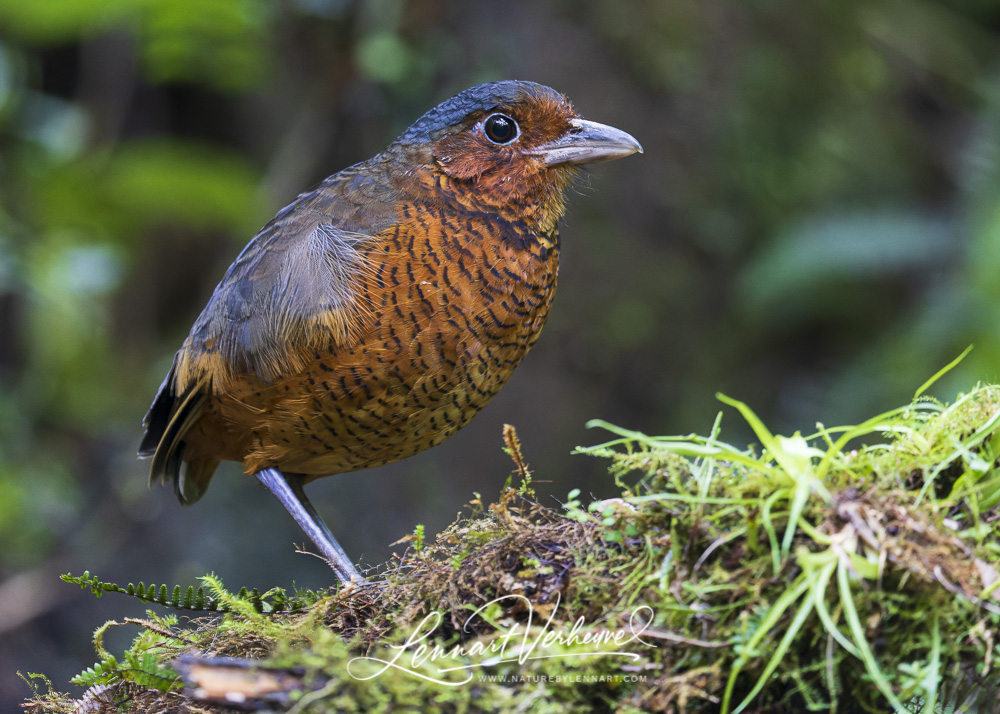
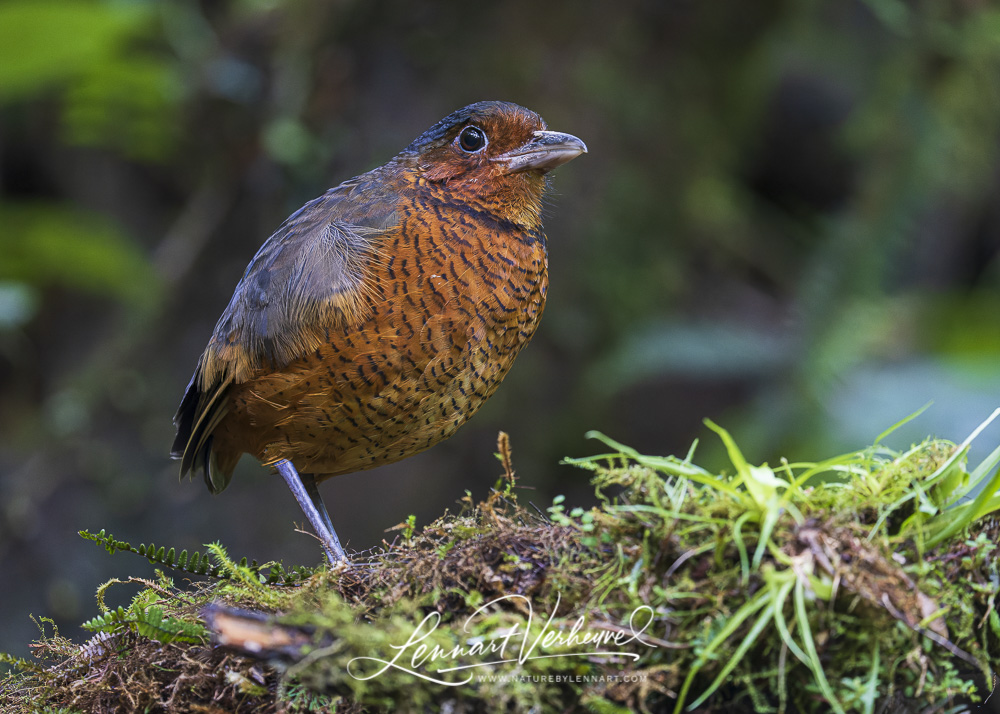
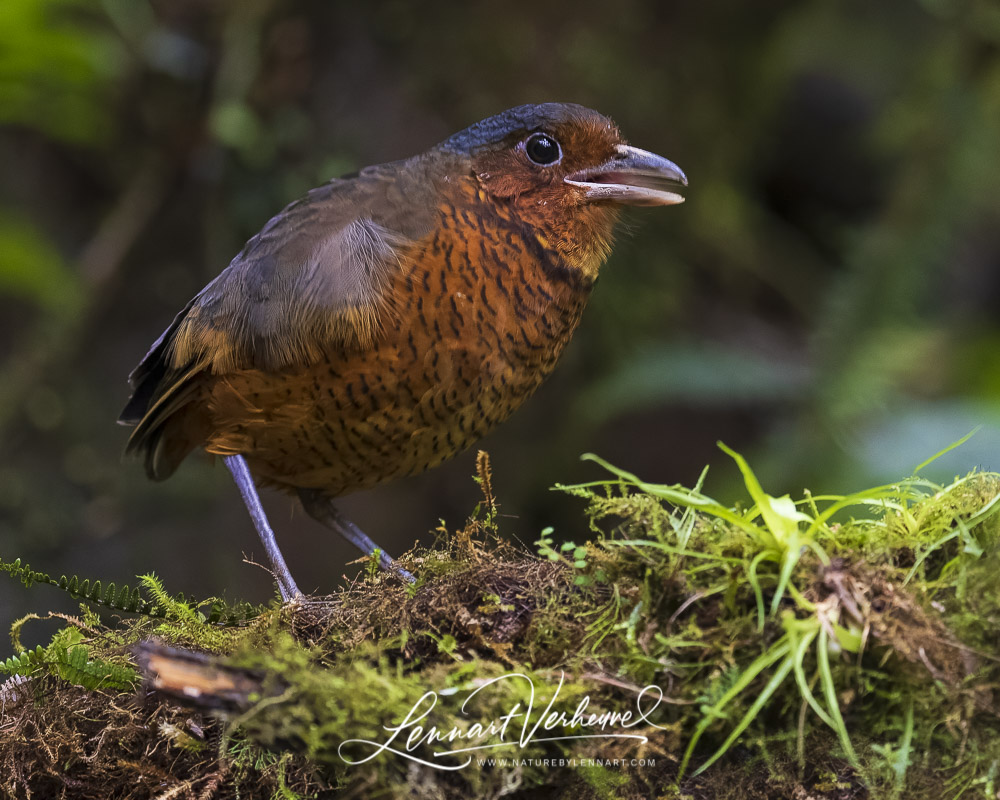
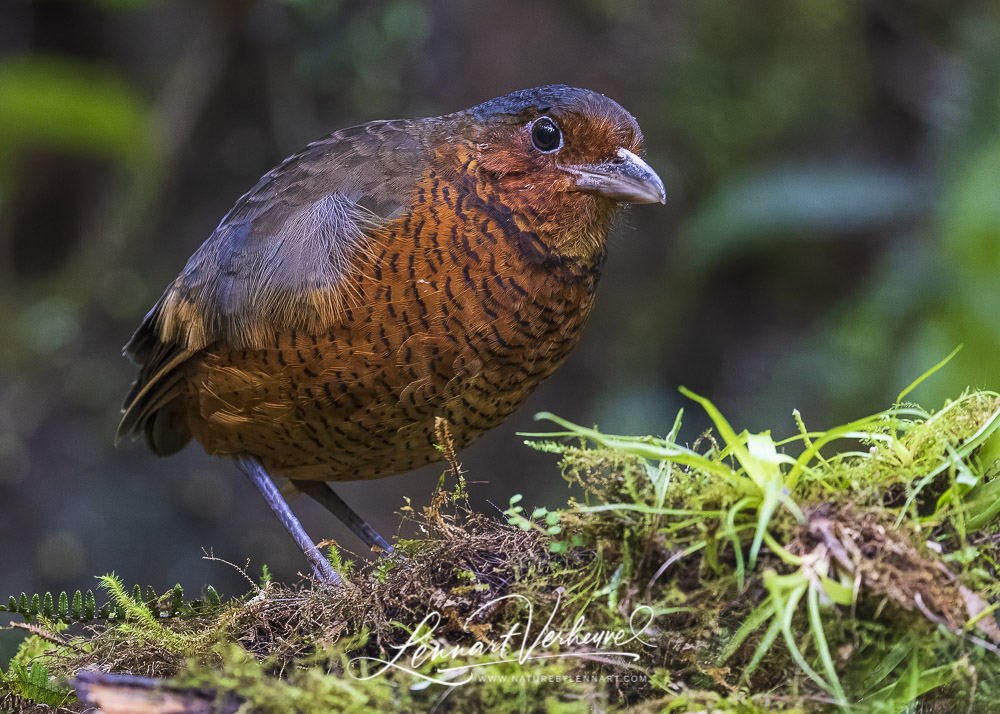
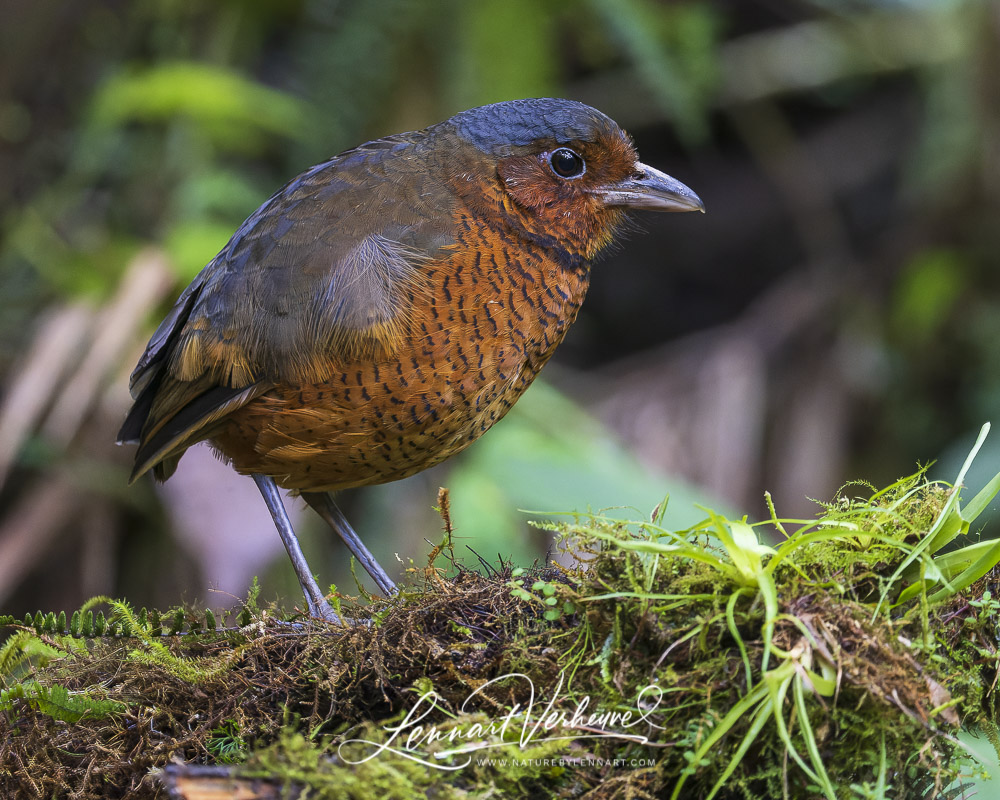
Giant Antpitta
It’s a surreal experience. While I photograph one of the shyest birds in South America, Angel shouts loudly to Rodrigo that he has found the bird. Mary doesn’t mind all the shouting and apparently associates it with food. I am very happy that I have succeeded in seeing this species!
Quite easily after this I get Ochre-breasted Antpitta and Moustached Antpitta ‘in the bag’. Ochre-breasted is already waiting on a branch.
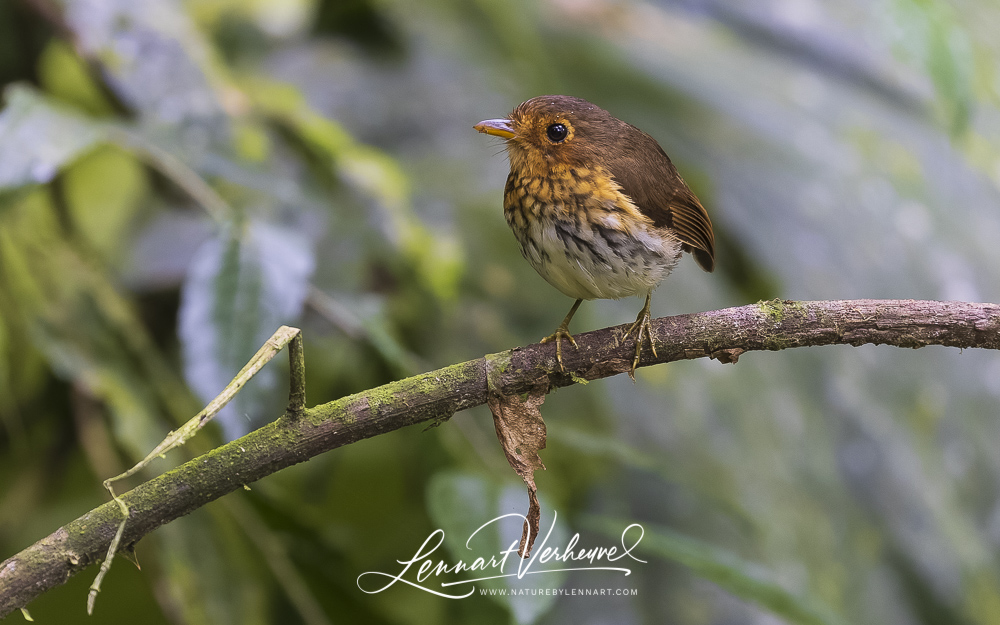
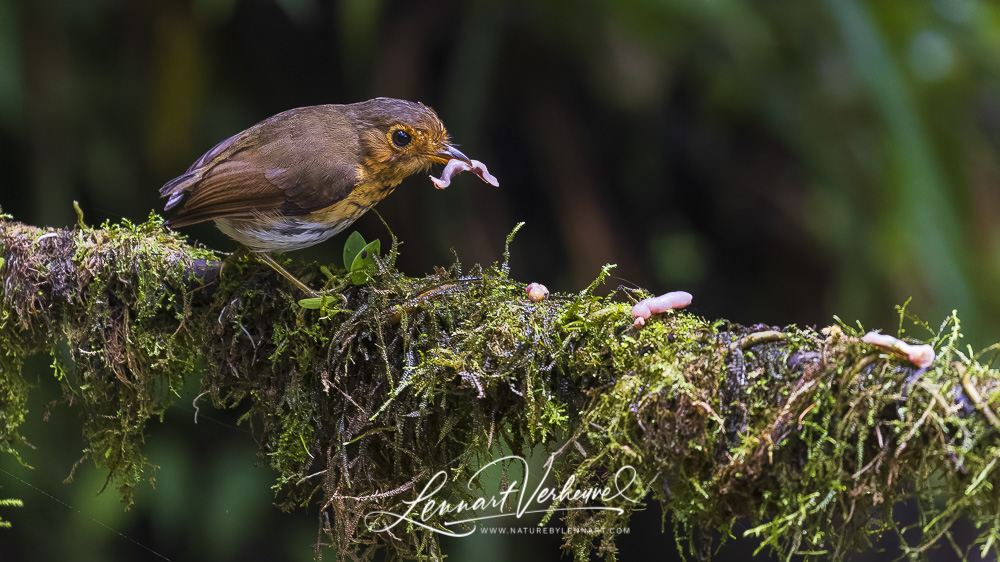
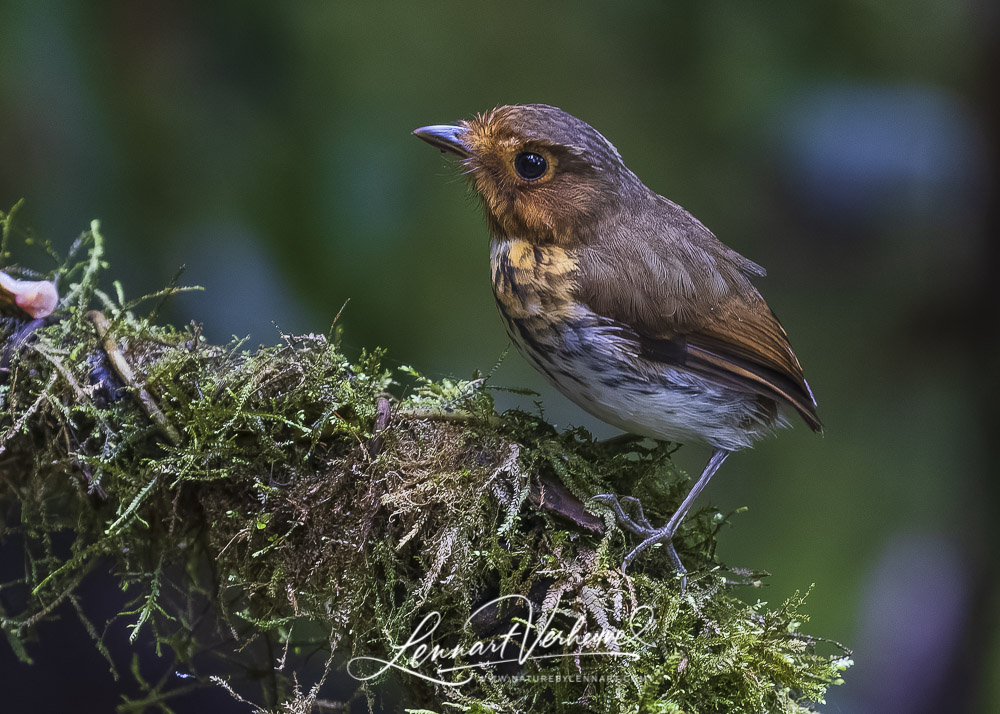
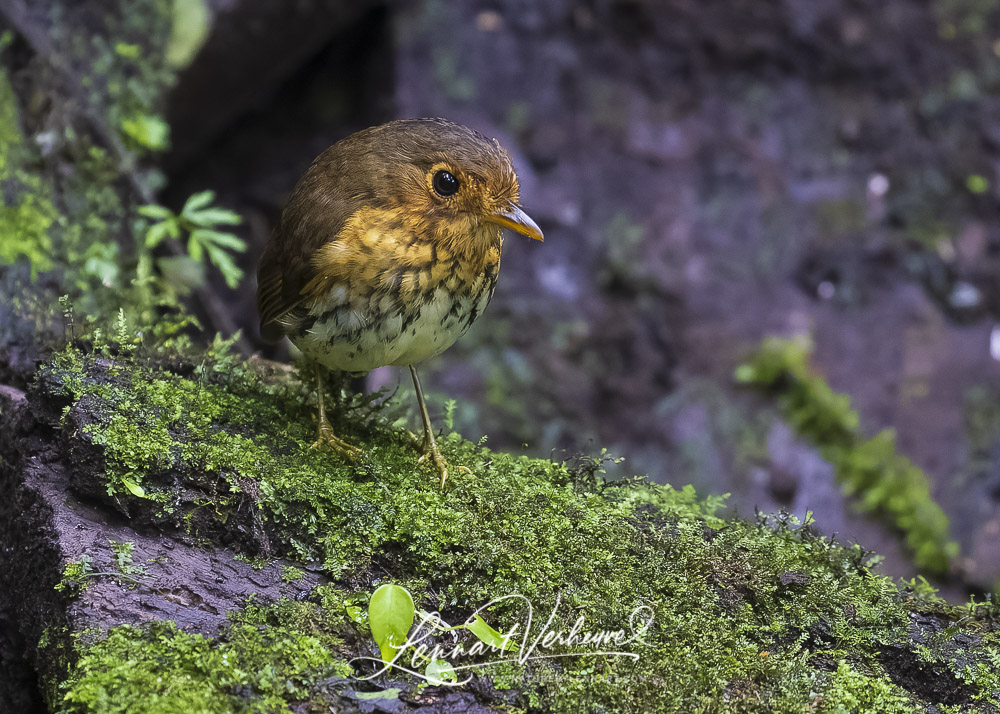
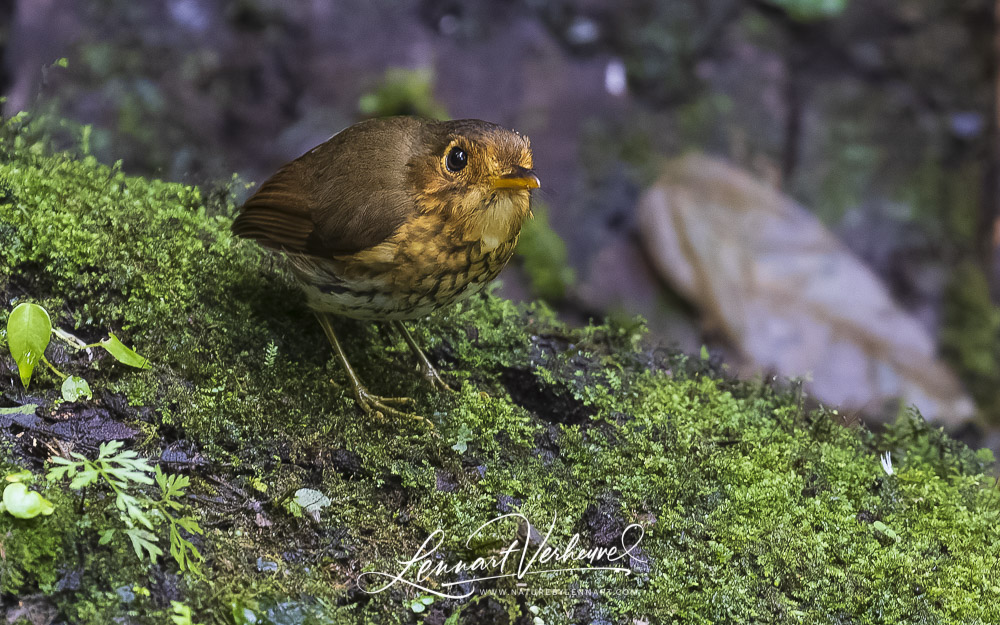
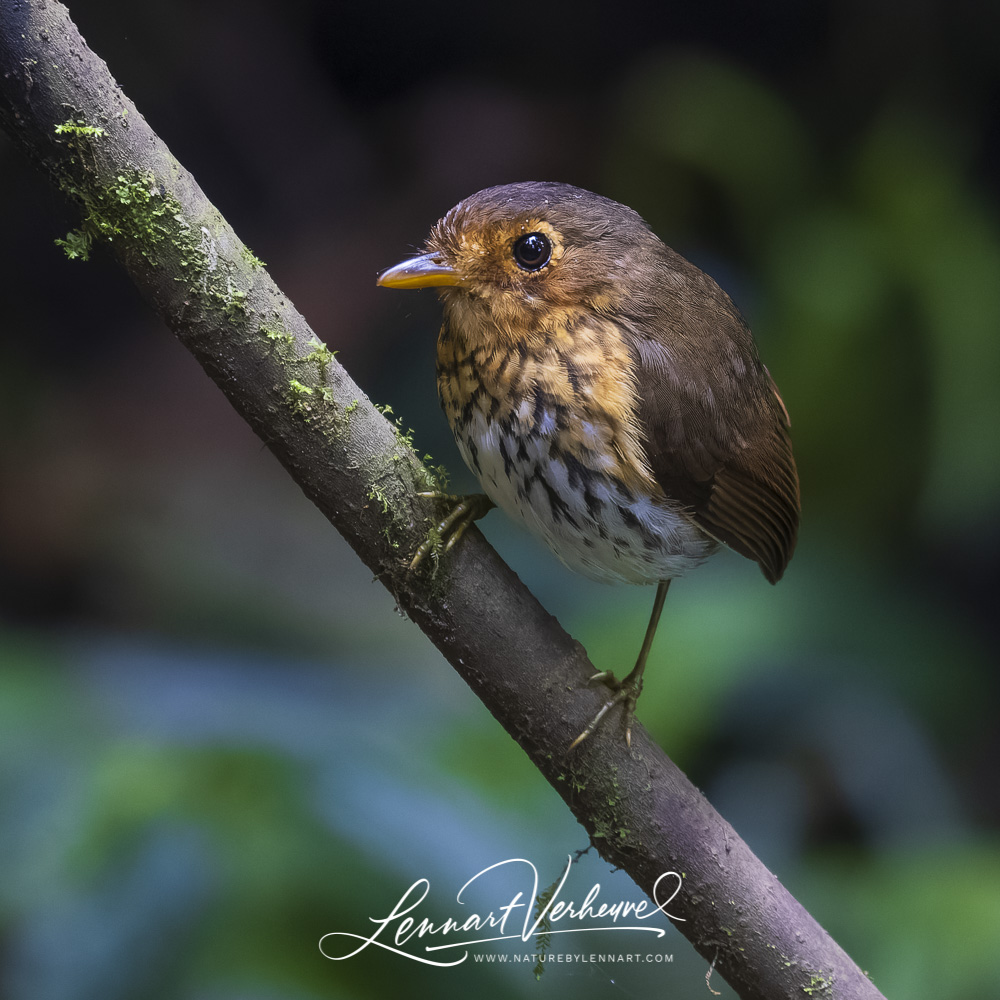
Ochre-breasted Antpitta
Moustached wants to come too after some insistence.
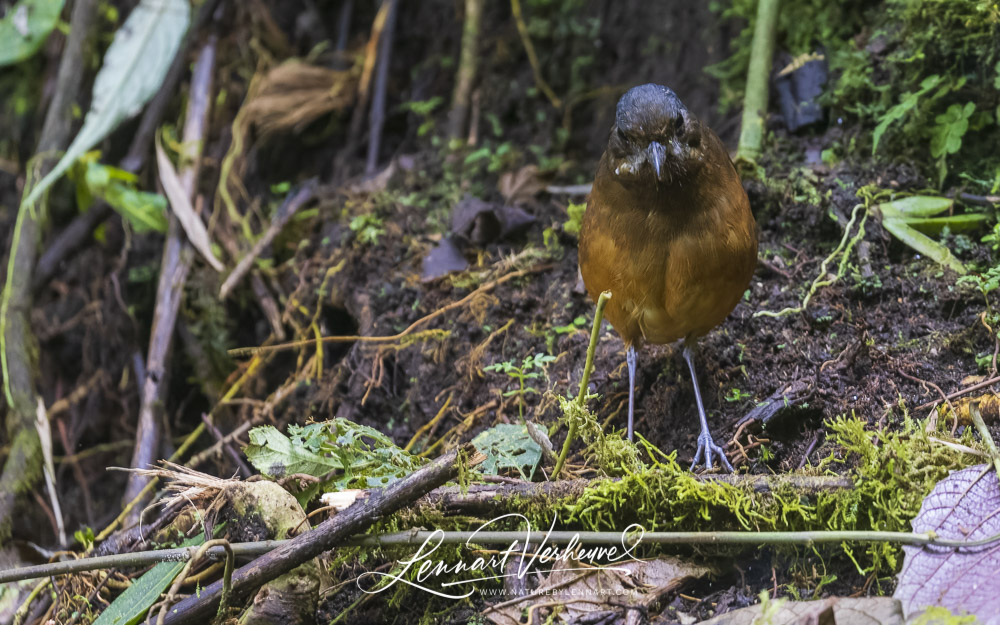
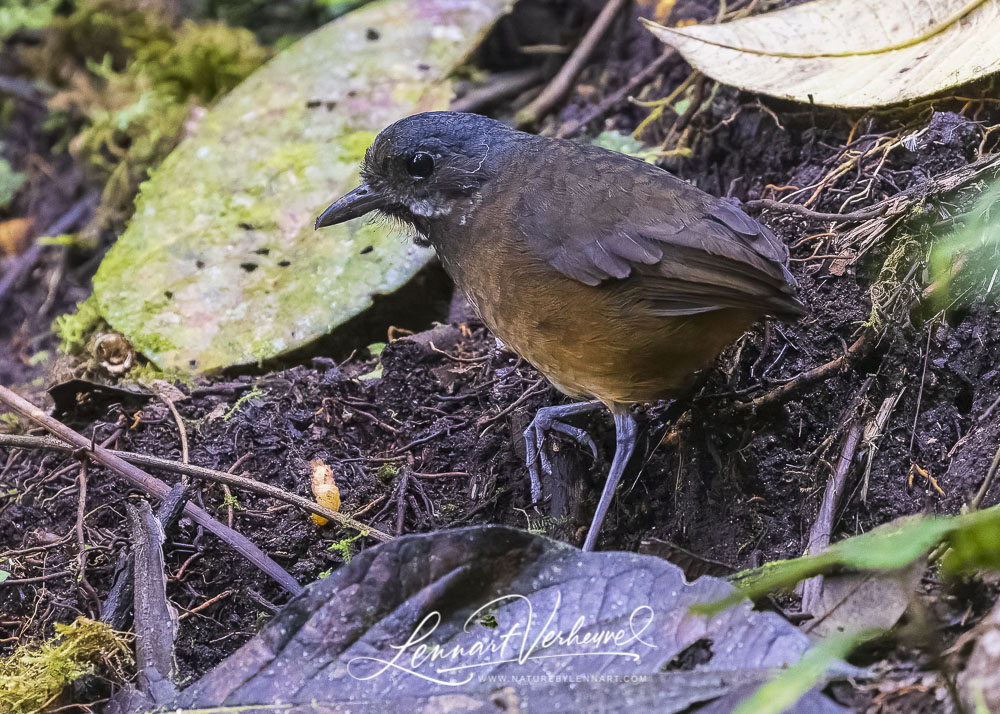
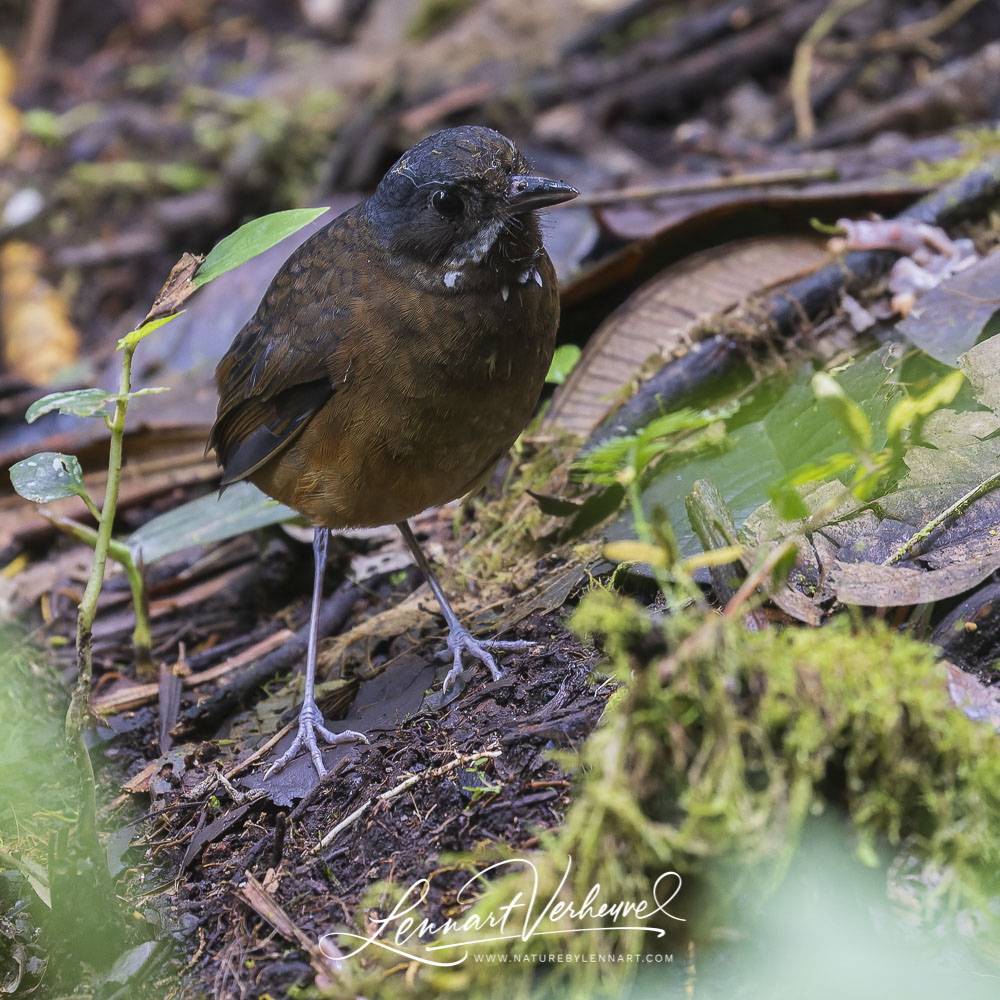
Moustached Antpitta
Especially the Moustached is a species that is also very difficult to find in other places. However, later it would turn out I would find one myself! During my walks on the Guacamayos Trail on the east slope of Quito I found my own Moustached Antpitta a week later. I was a bit proud of that of course, although I would rather have found a species that I had not seen yet!
After these two species, it was the turn of Yellow-breasted Antpitta. Again a beautiful bird that unfortunately could only be photographed from above. But it sure is beautiful!
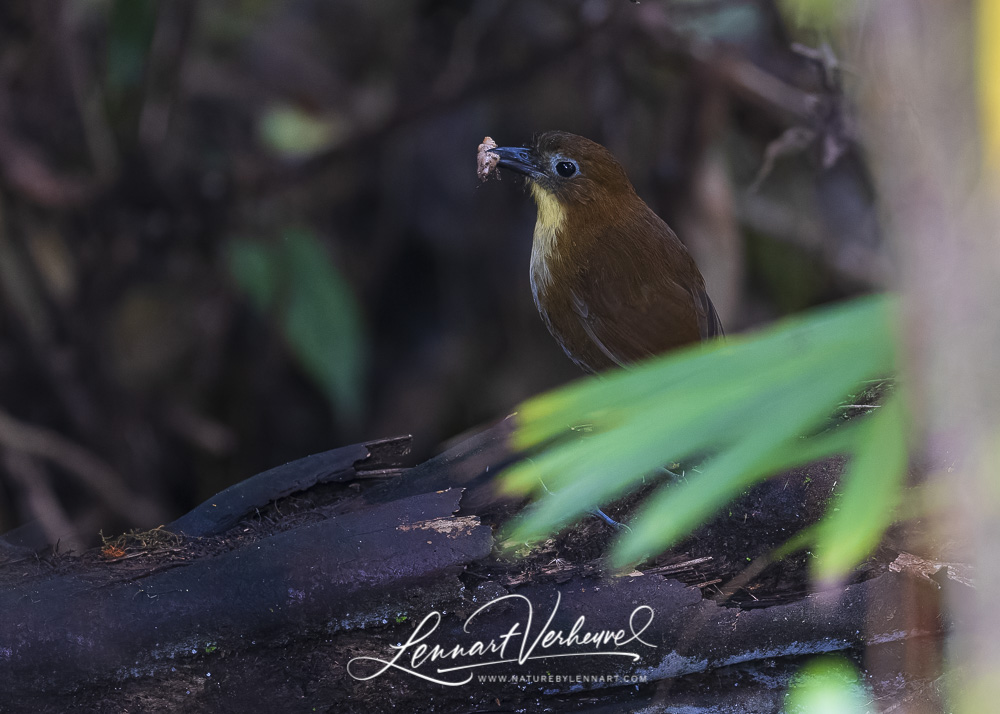
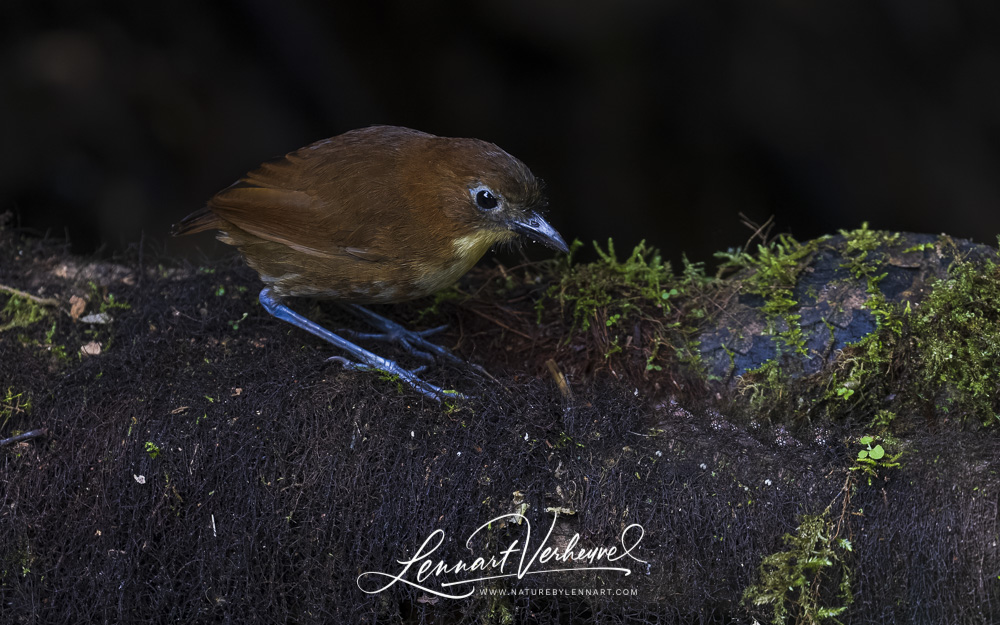
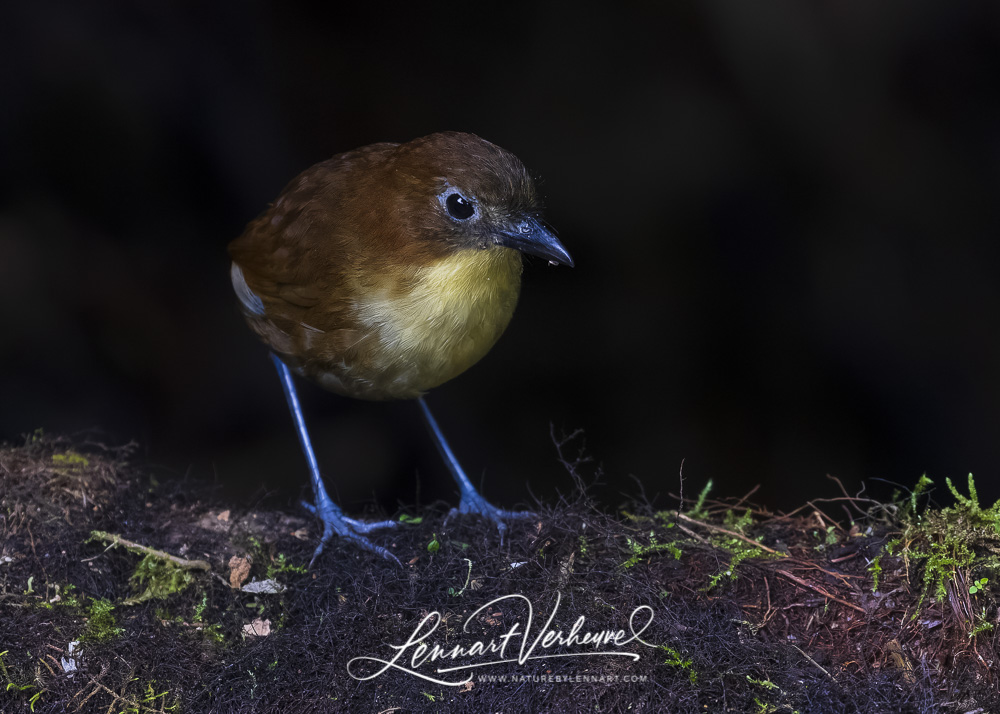
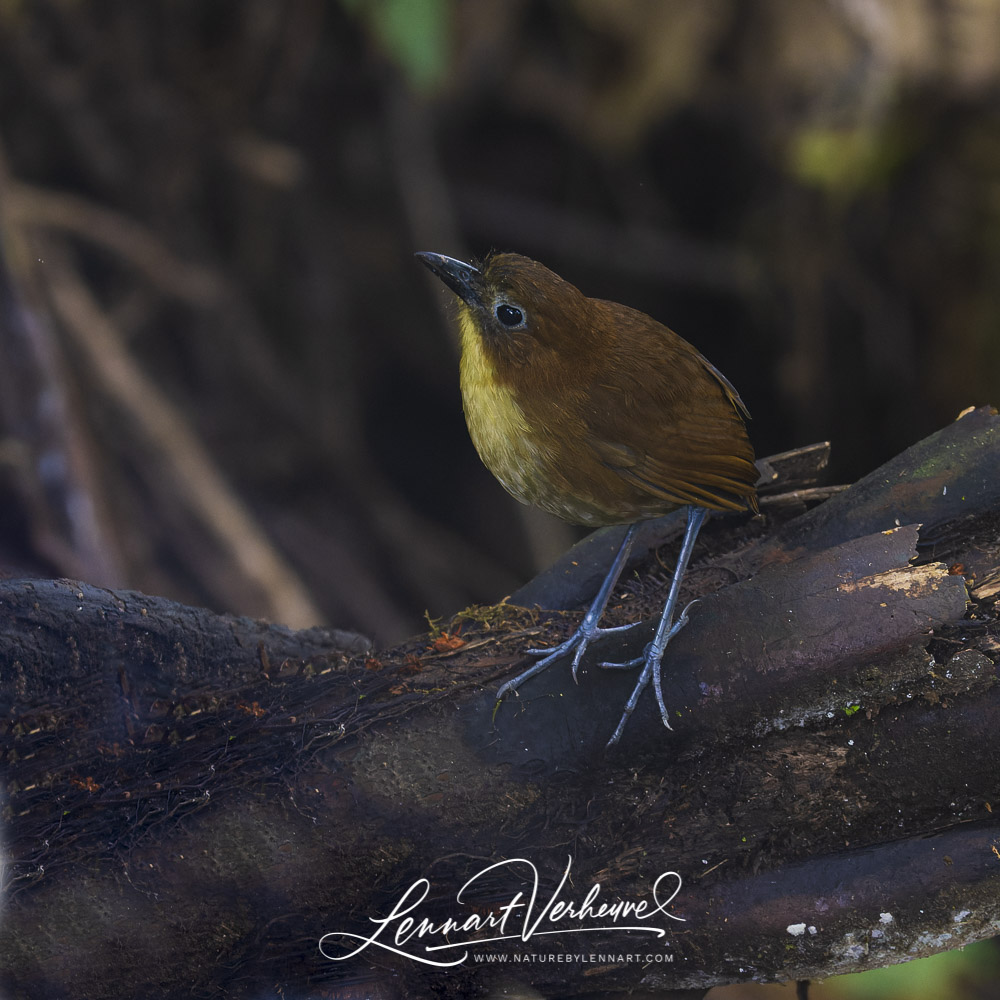
Yellow-breasted Antpitta
In between we don’t lose sight of the other birds of Paz de las Aves of course. We see a beautiful male Golden-winged Manakin.
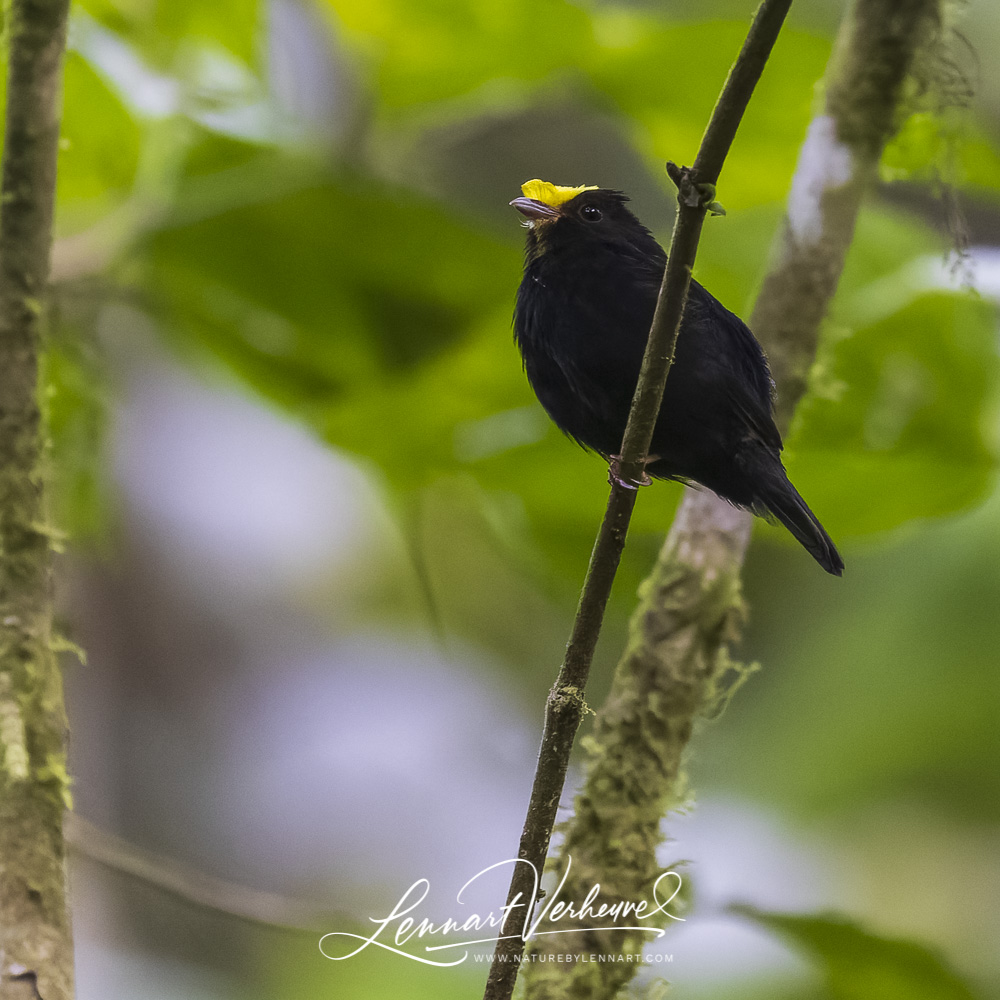
Golden-winged Manakin
I am also a big fan of the beautiful Toucan Barbet.
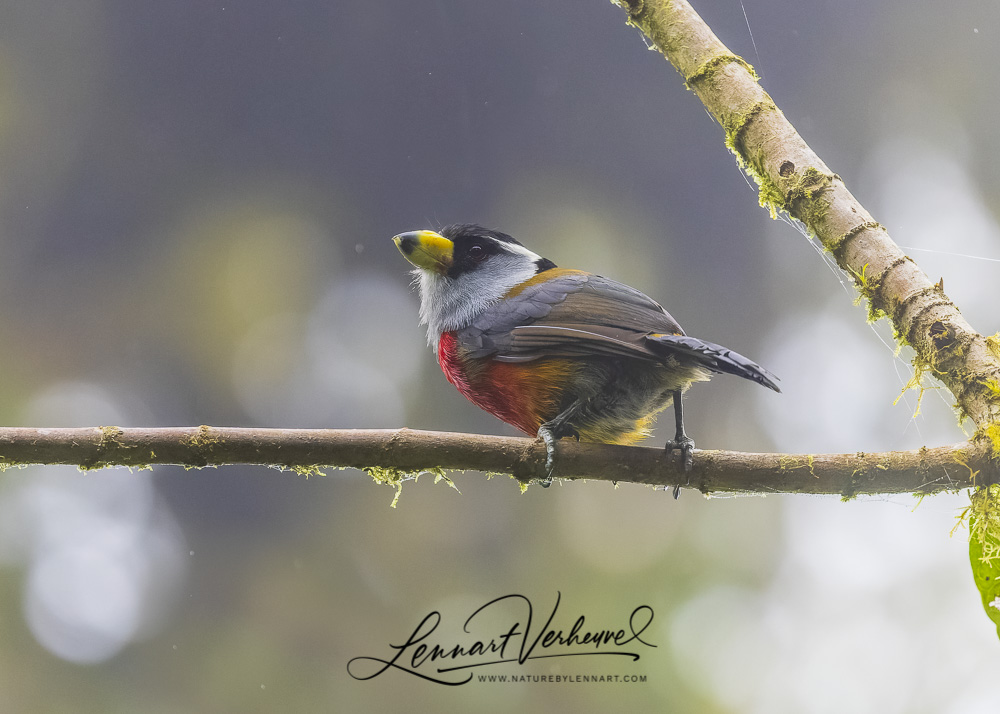
Toucan Barbet
Then it’s the turn of the most common of the bunch, the Chestnut-crowned Antpitta, but it just won’t cooperate! Seeing this species is also not that easy, but it can be heard everywhere in the cloud forest. But despite Angel’s frantic efforts, this bird won’t get out. However, they have another good species in mind to end the morning: the Ocellated Tapaculo. During my ride with Rodrigo to the bear the day before, I had already talked about that species and expressed that I would like to see it. Because I also booked an overnight stay and we hadn’t seen any owls the night before, they are willing to give me a try. It is not easy to see this species. It is a one and a half hour walk back and forth and it is certainly not guaranteed that the species will cooperate.
This turns out to be true because we do not hear or see the species. At the place where it should be, Angel again tries his best to find it, but the tapaculo doesn’t make a sound. In the end we must return without success. On the way back we suddenly hear an Ocellated Tapaculo next to us! Then all goes fast. Angel makes a spot with worms and starts calling this bird too. The Ocellated Tapaculo cannot resist the call and soon this shy bird is also on the worms! I am very happy that I can also see this bird because it is a very beautiful bird too. Most tapaculos are inconspicuous dark birds, but not the Ocellated Tapaculo!
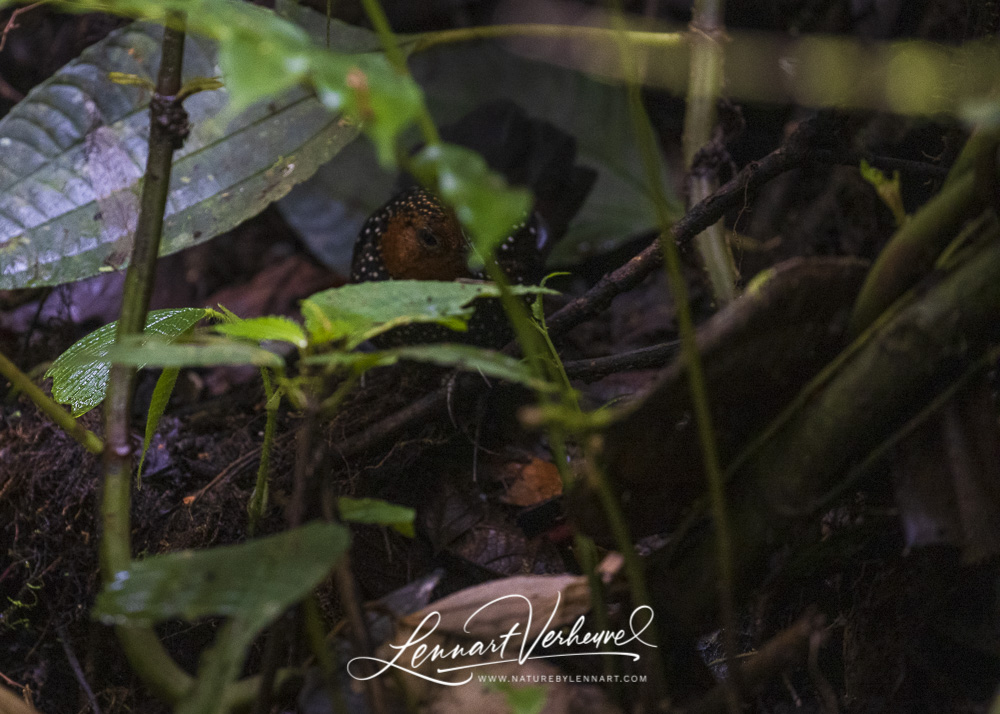
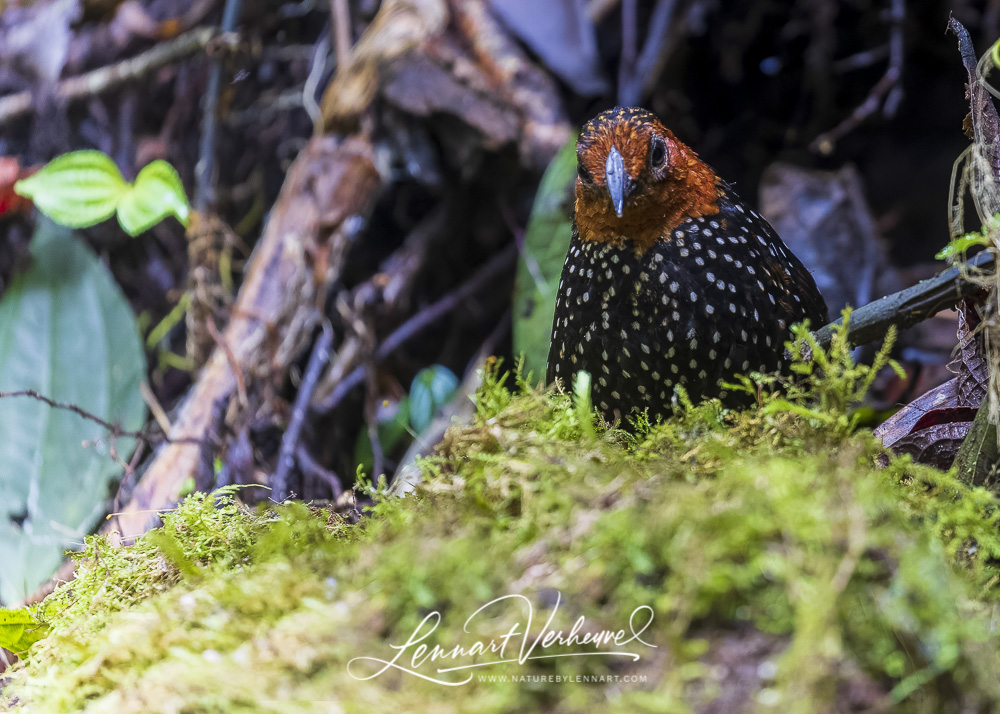
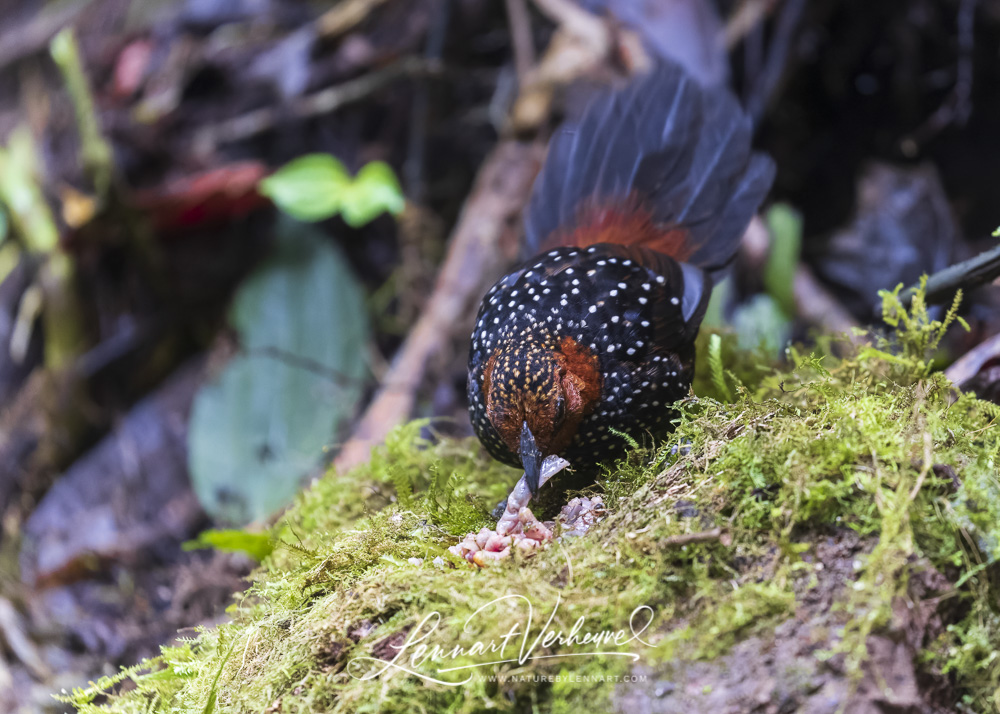
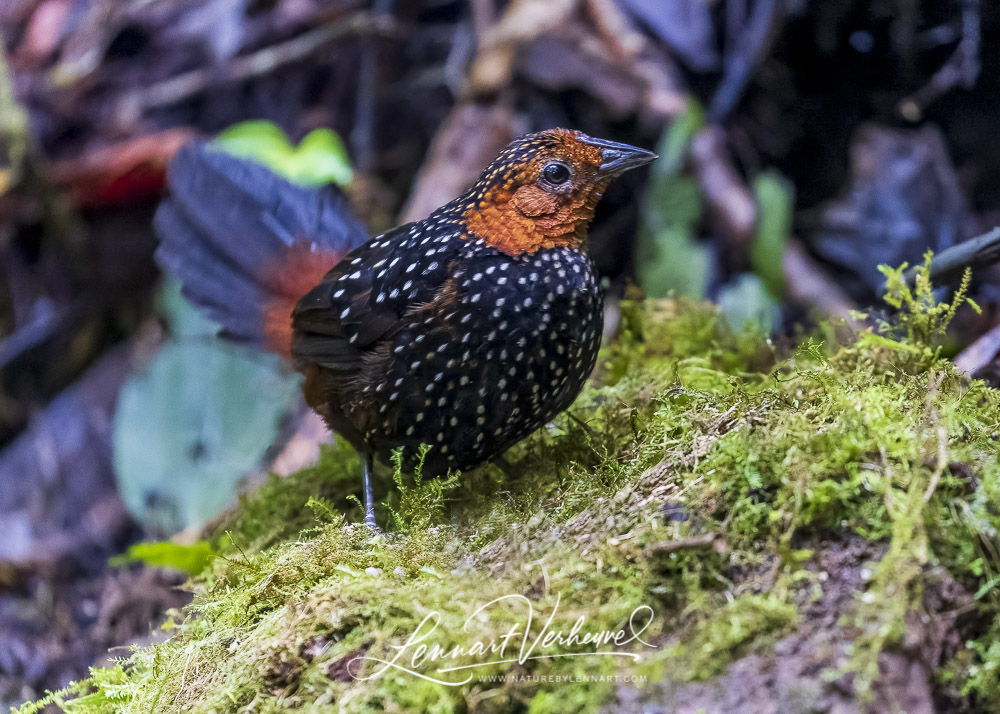
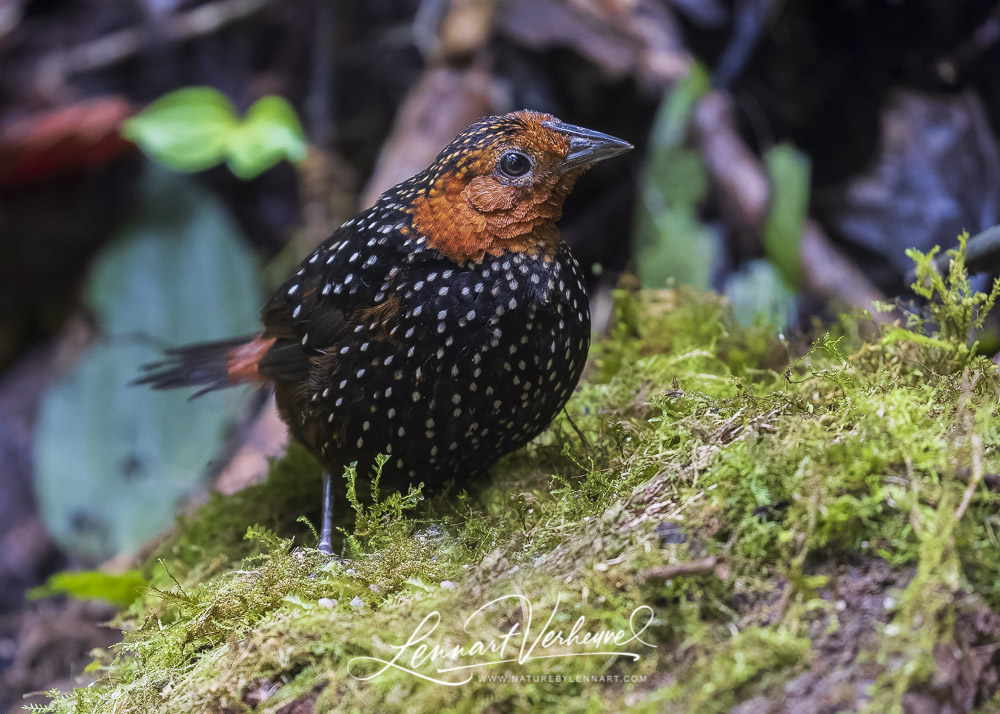
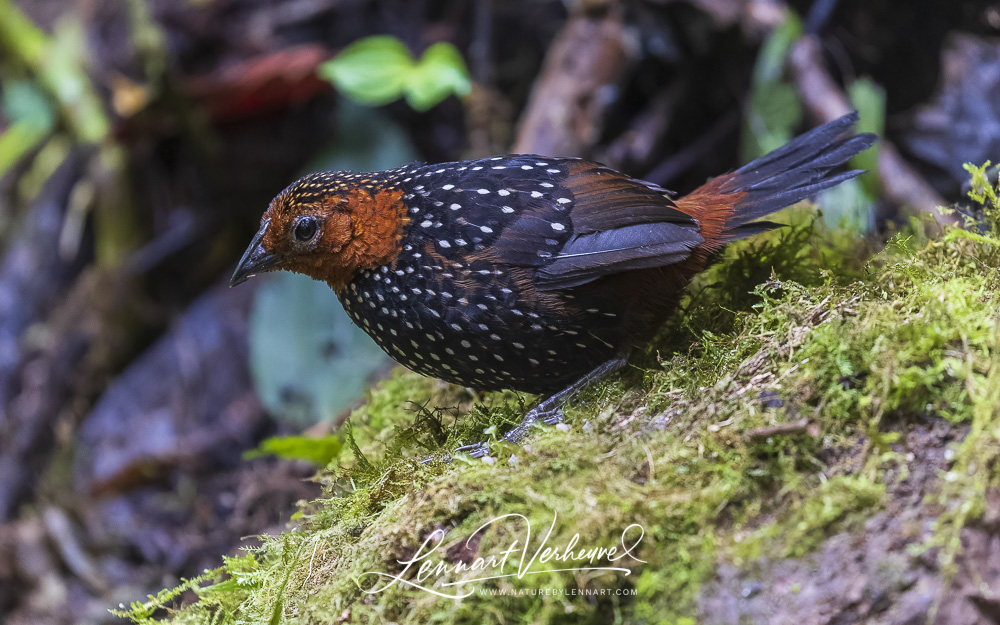
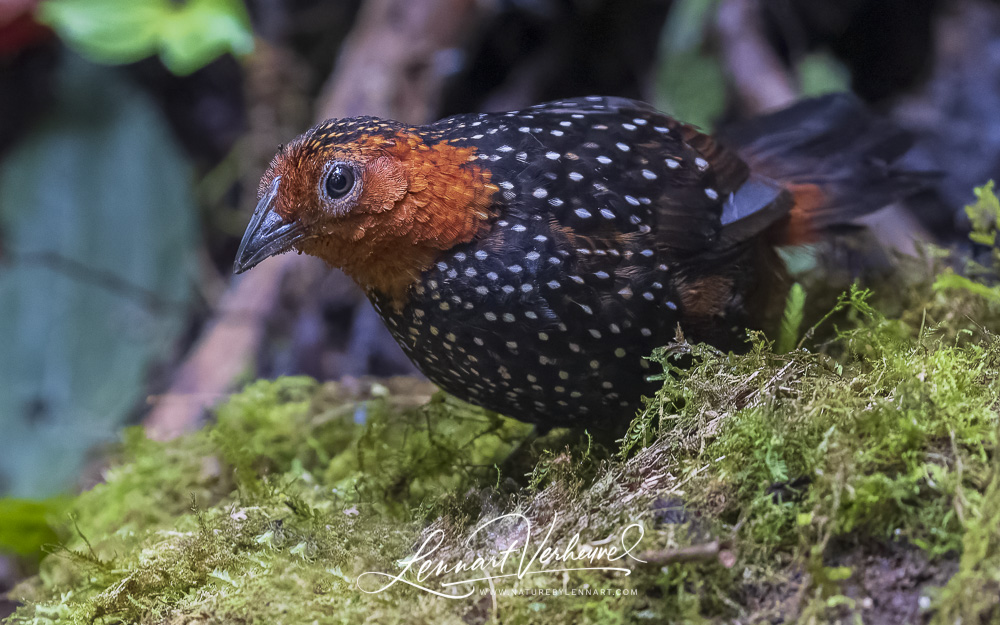
Ocellated Tapaculo
Certainly a kind of honorary-antpitta’!
For the antpittas it wouldn’t be as good as Paz de las Aves anymore, in the other places that I would visit in Ecuador, but I did see a number of beautiful new species. Each spot has its own antpitta as a specialty. For example, at the Wildsumaco Lodge I saw Plain-backed Antpitta on the worms.
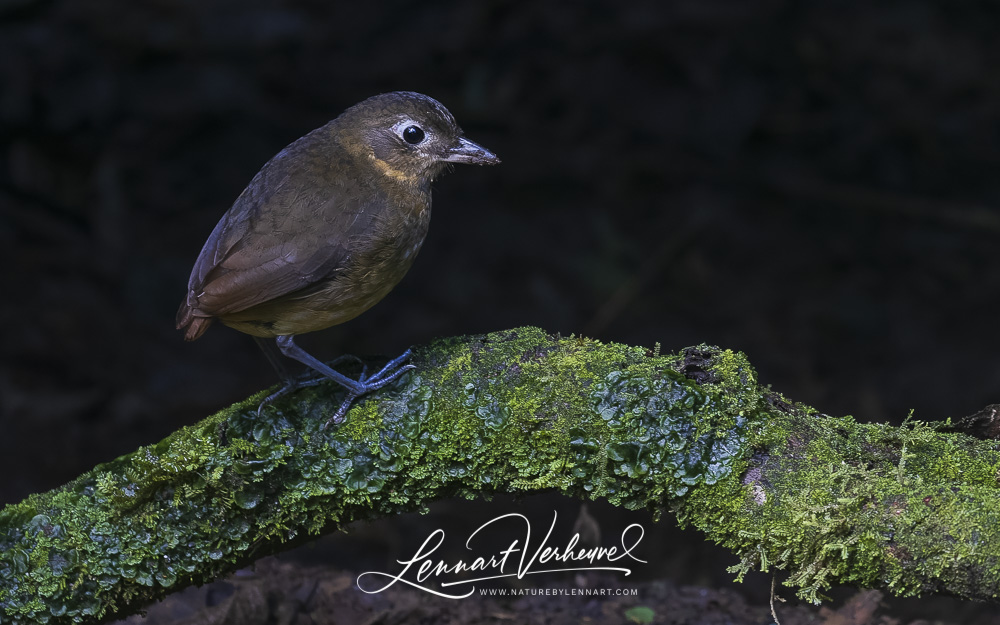
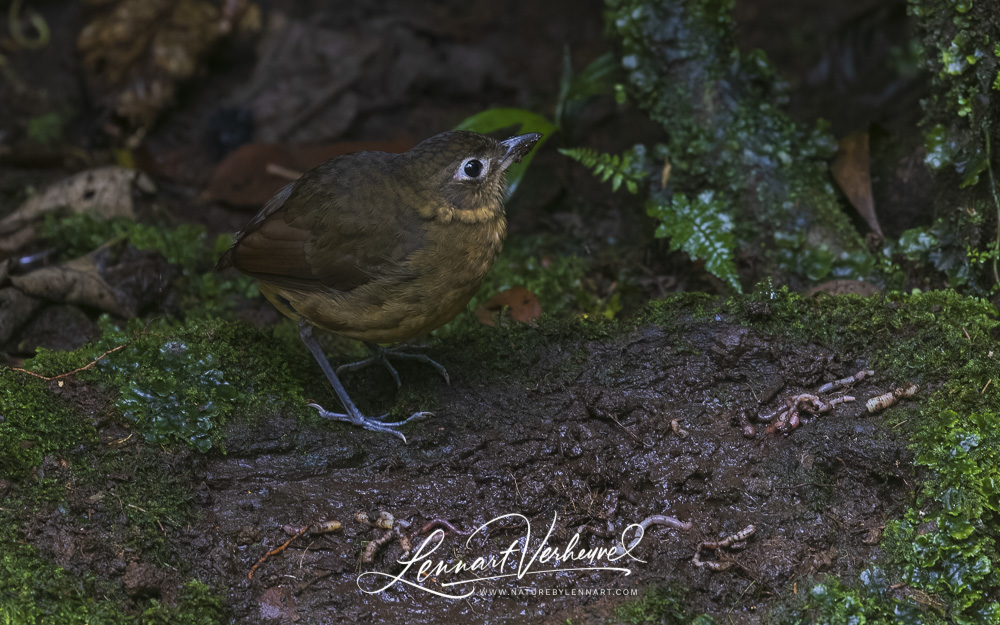
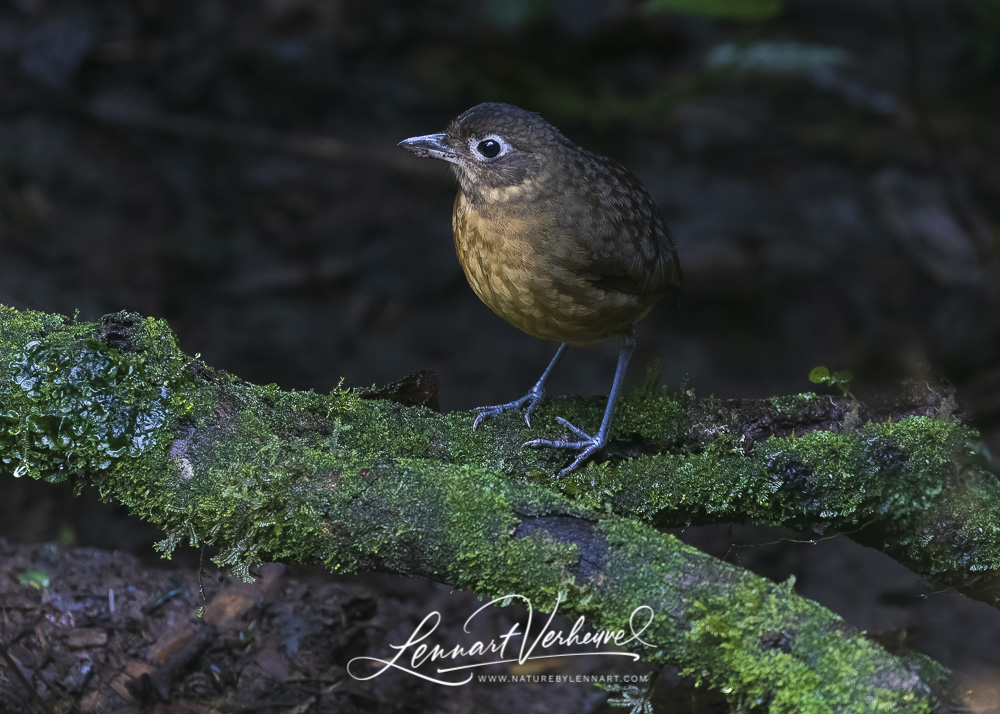
Plain-backed Antpitta
I would later be able to find that species myself in the forest. Again a species that I had already seen unfortunately! In addition, I had some more beautiful observations of Ochre-breasted Antpitta.
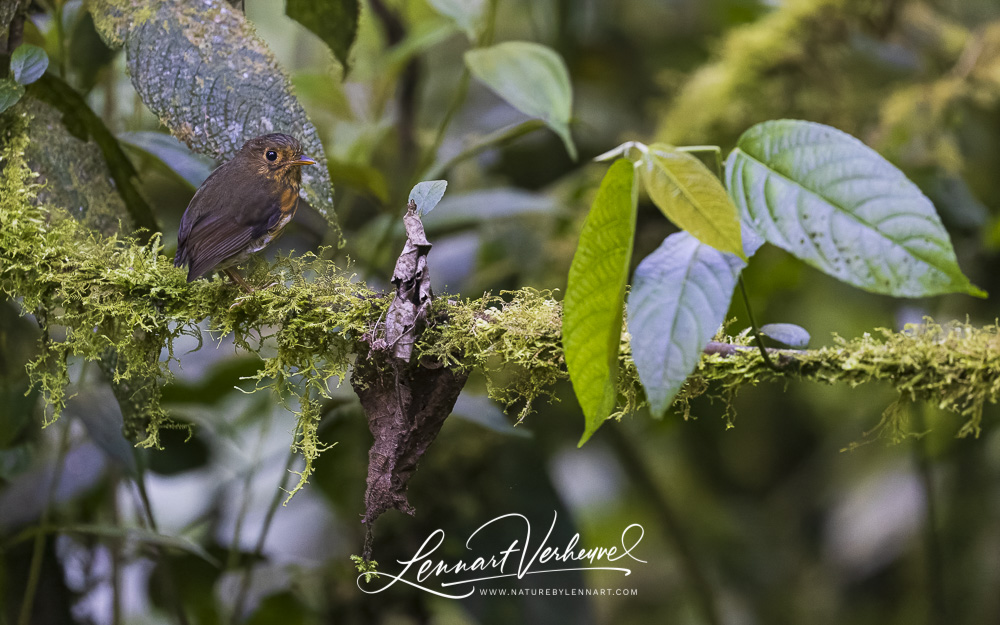
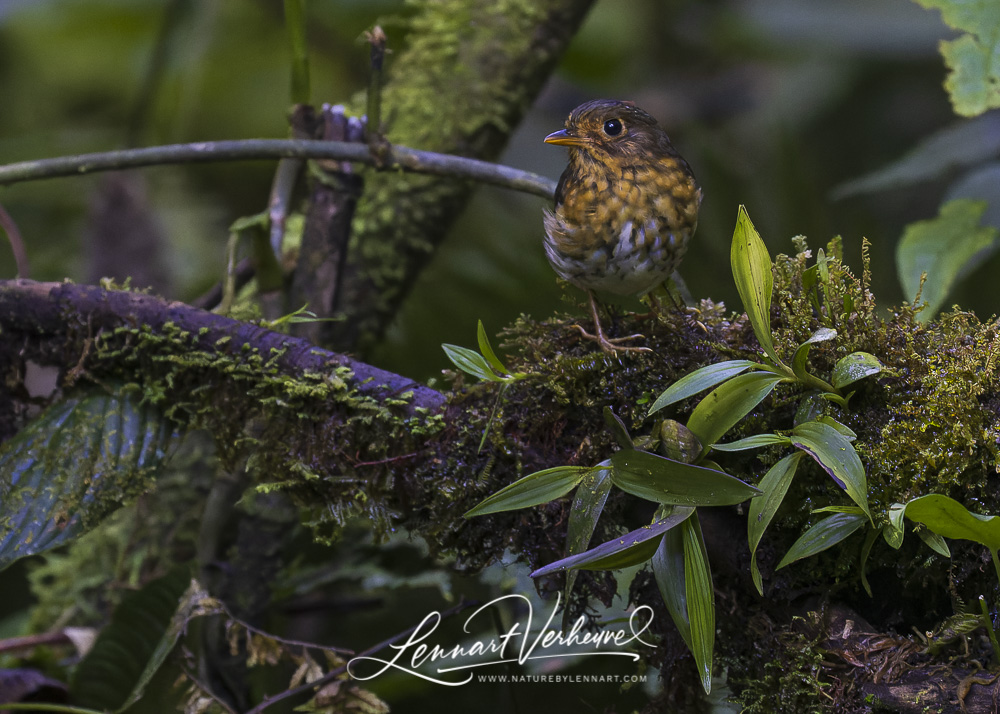
Ochre-breasted Antpitta
A true new antpitta species I found myself was the Slaty-crowned Antpitta that I noticed in the vegetation along the Guacamayos Trail and that also sat down on the path for a while. The pictures weren’t that good, but it sure was cool to finally find a new antpitta on my own!
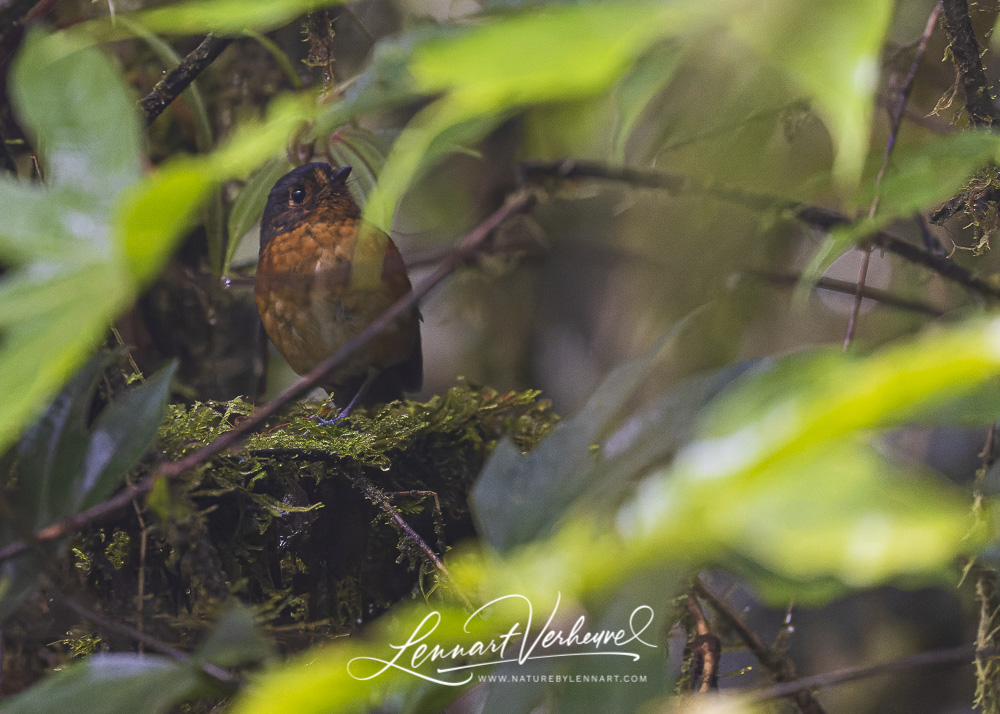
In addition, I also found my own Moustached Antpitta at this location.
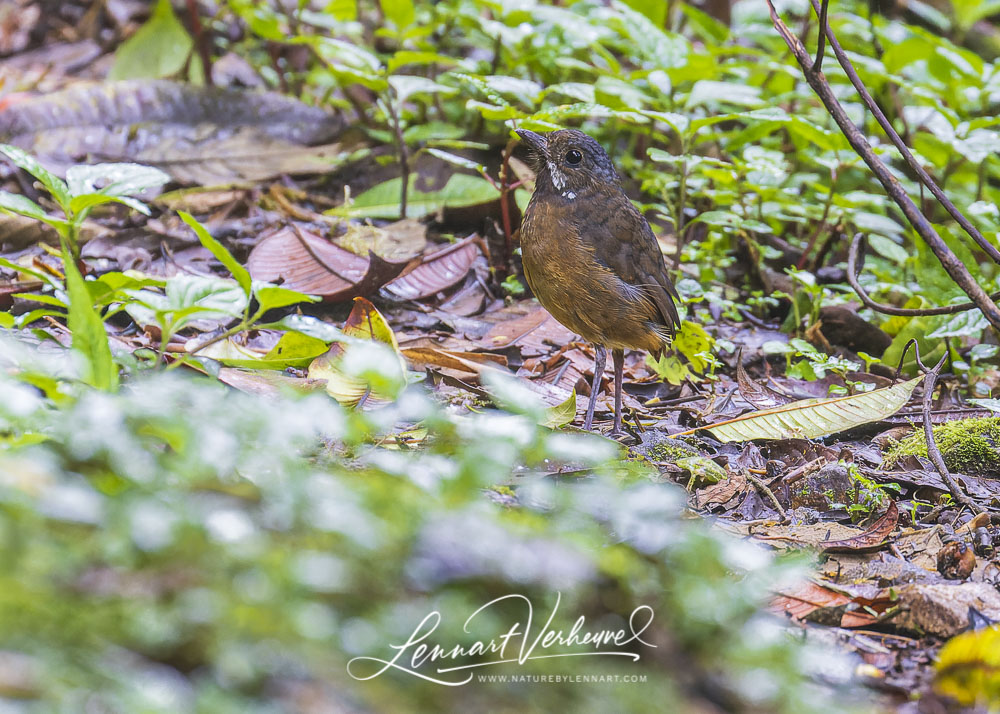
At the Cabañas San Isidro it was possible to see the beautiful White-bellied Antpitta. The morning I went to try it, I was joined by a large group of American birders. At first they were quiet, but as the species didn’t show up, they started to speak louder and louder. In the end there was a lot of buzz and the antpitta wouldn’t come despite all the efforts of the local man with the worms. Finally, their guide announced it was time for breakfast and the entire group disappeared towards the breakfast table. I was left alone with the local guide who was trying to lure the bird. Five minutes after the Americans disappeared, the White-bellied Antpitta was on the worms!


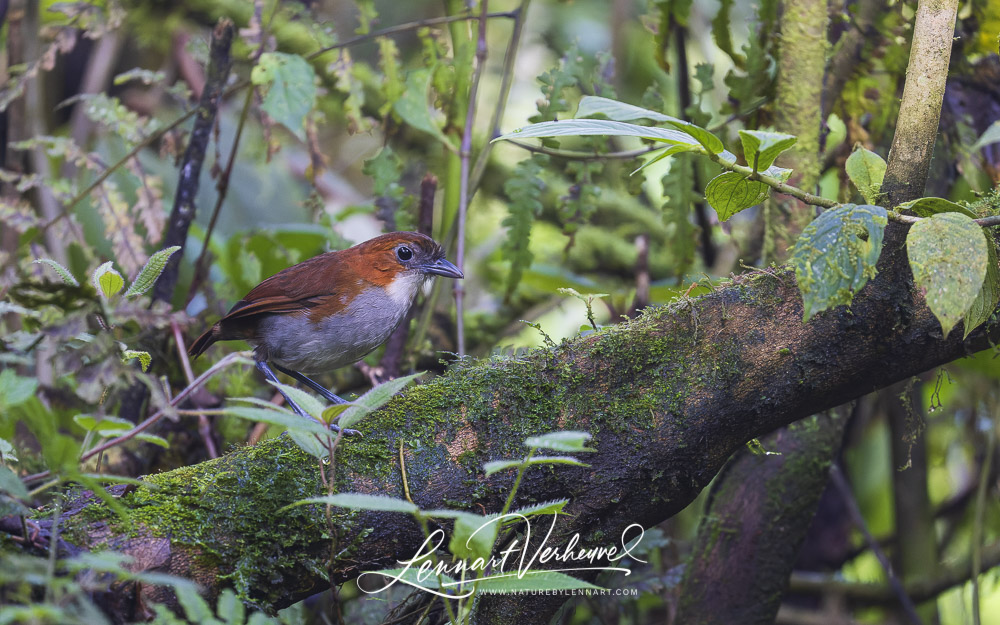
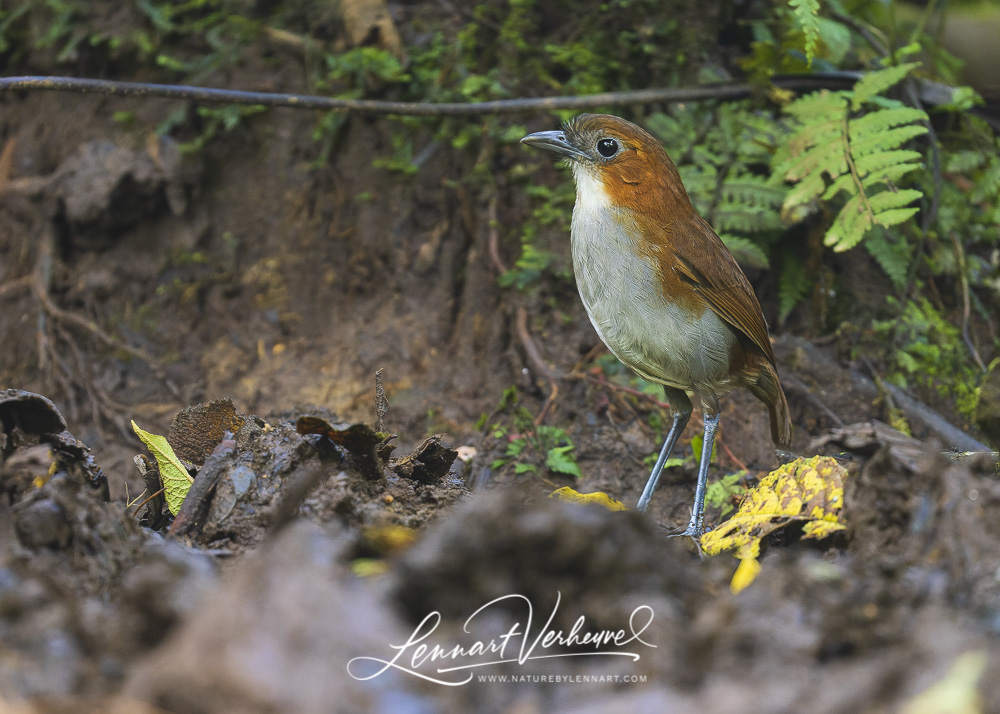
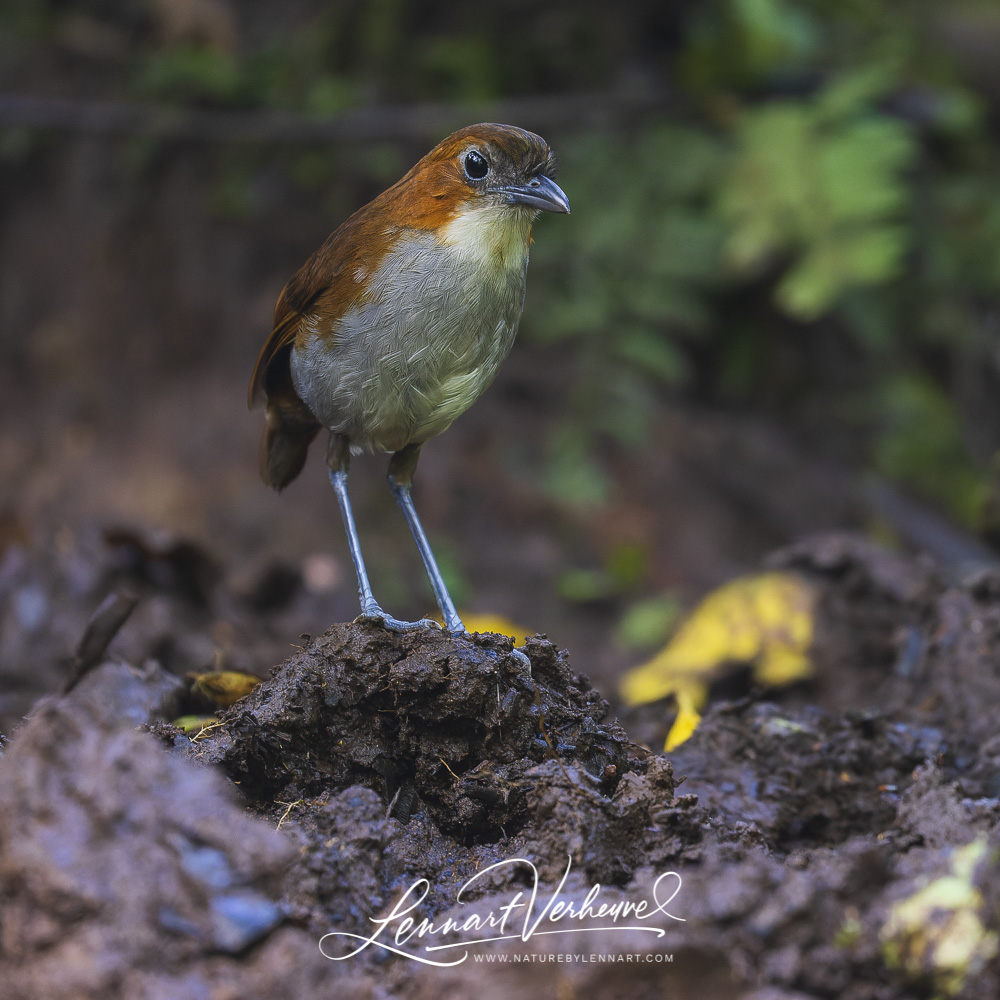
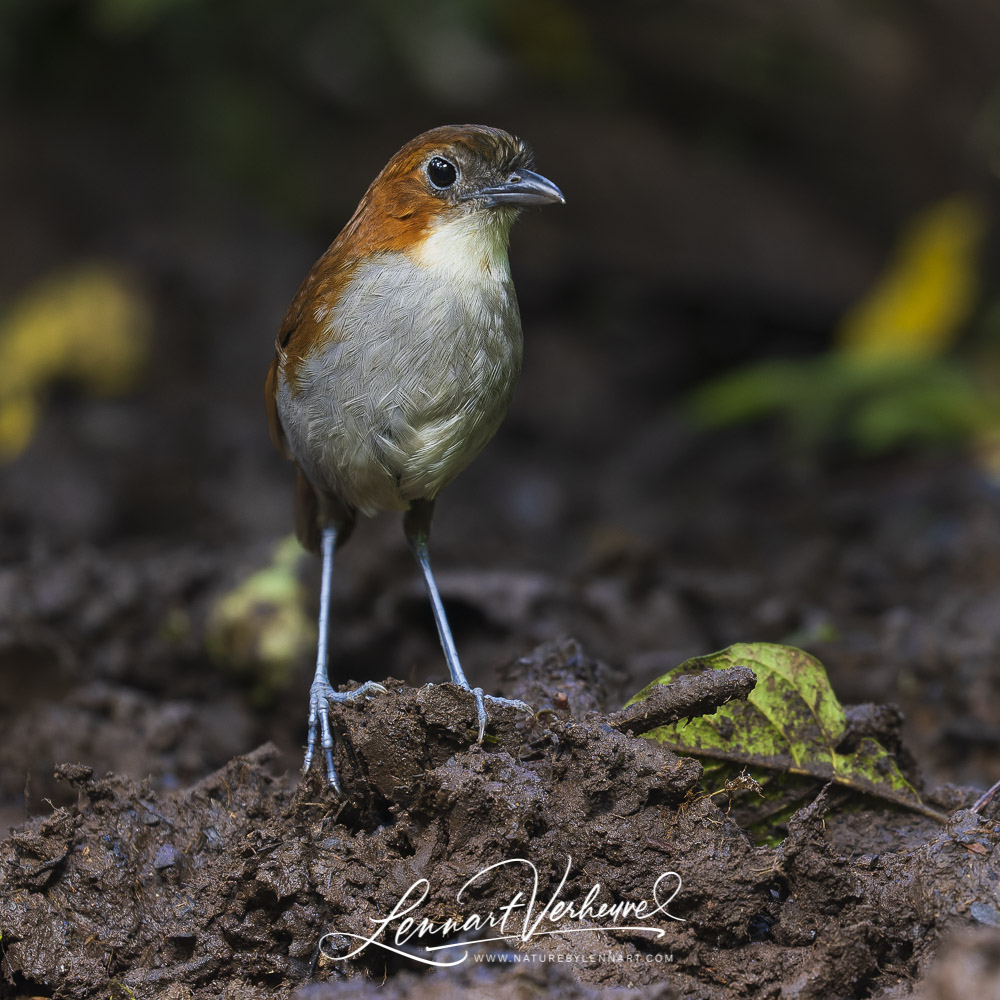
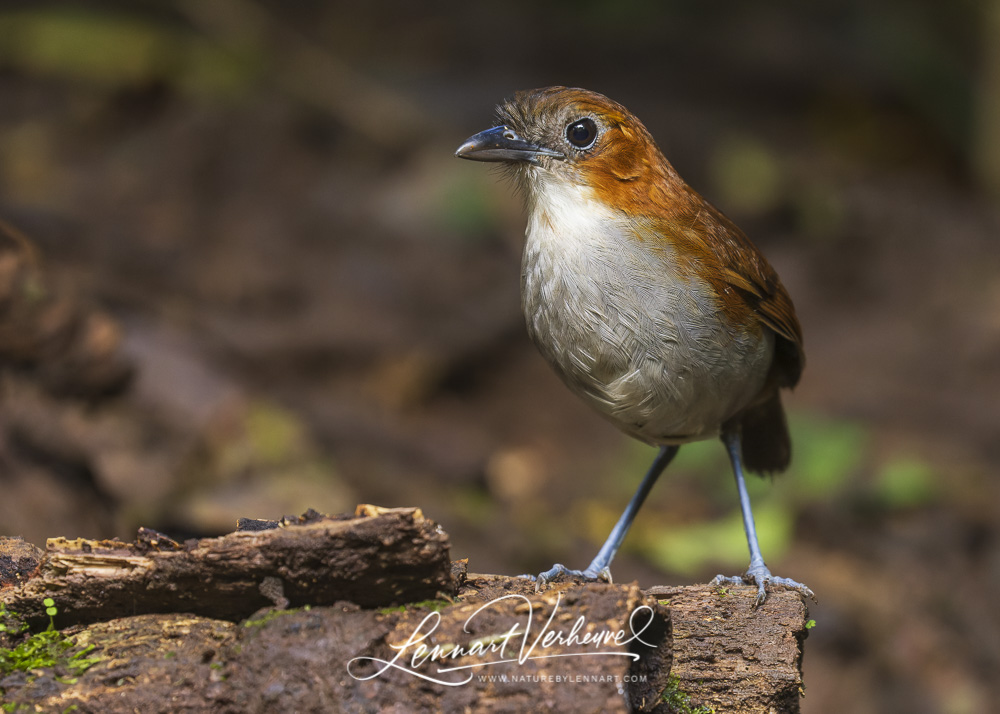
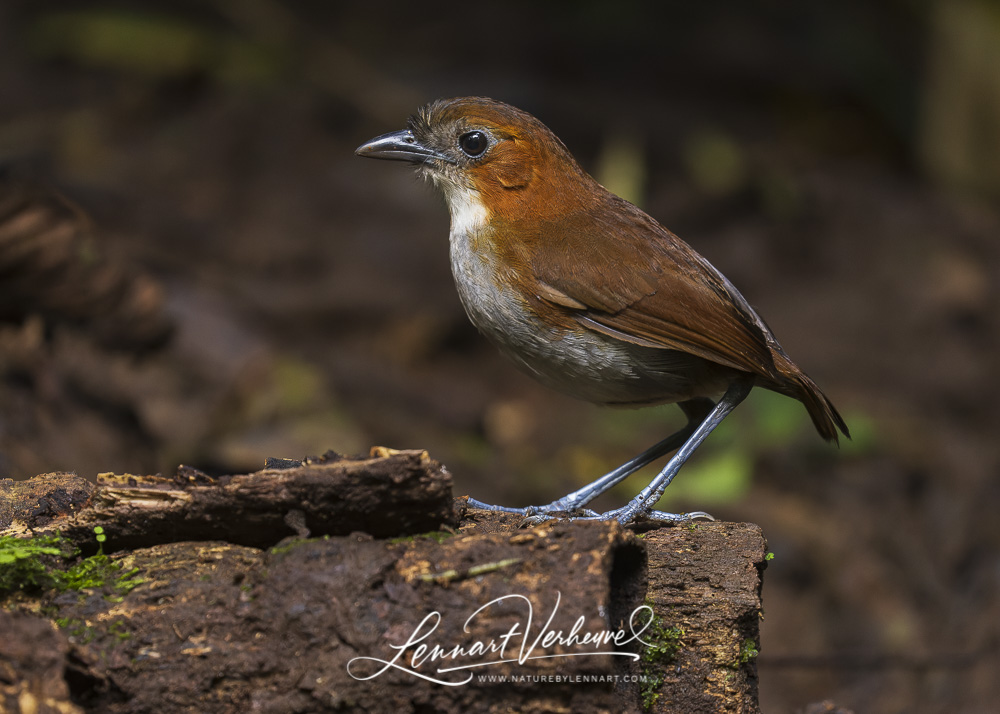
White-bellied Antpitta
I saw my last new antpittas again on the ‘west slope’. I went to the Yanacocha Reserve early in the morning to listen to courtship of Imperial Snipes. I had once missed this species by a few meters in Peru and that had never sat right with me. After hearing the beautiful courtship of this species in the morning twilight, I had some time to continue with some birdwatching. Soon I found an antpitta on a trail that turned out to be an Undulated Antpitta! This species can also be heard regularly, but it is very difficult to see!
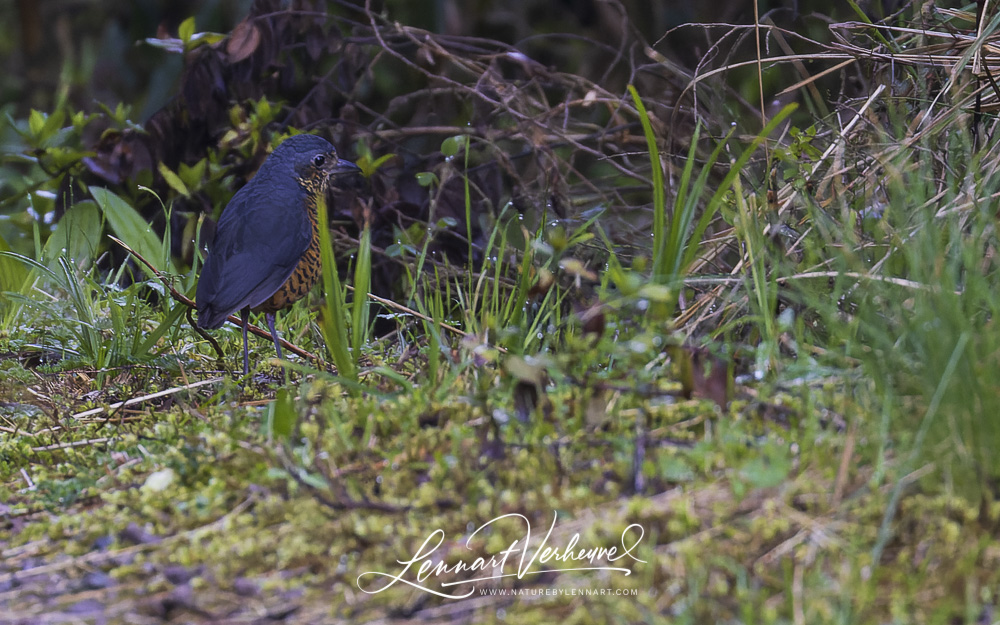
So I was very happy with this new self-found antpitta. I also found a Muisca Antpitta, but I would see it much better later in the morning.
A little further from Yanacocha was Zuro Loma. This is a project that was set up by a young guy called Dario who managed to attract a number of birds there as well. The specialty is Chestnut-naped Antpitta, but unfortunately I didn’t manage to see that species. Well I came close! The bird called out loudly from the bushes, but did not dare to come out. That is also part of the search for antpittas… The Muisca Antpitta cooperated well.
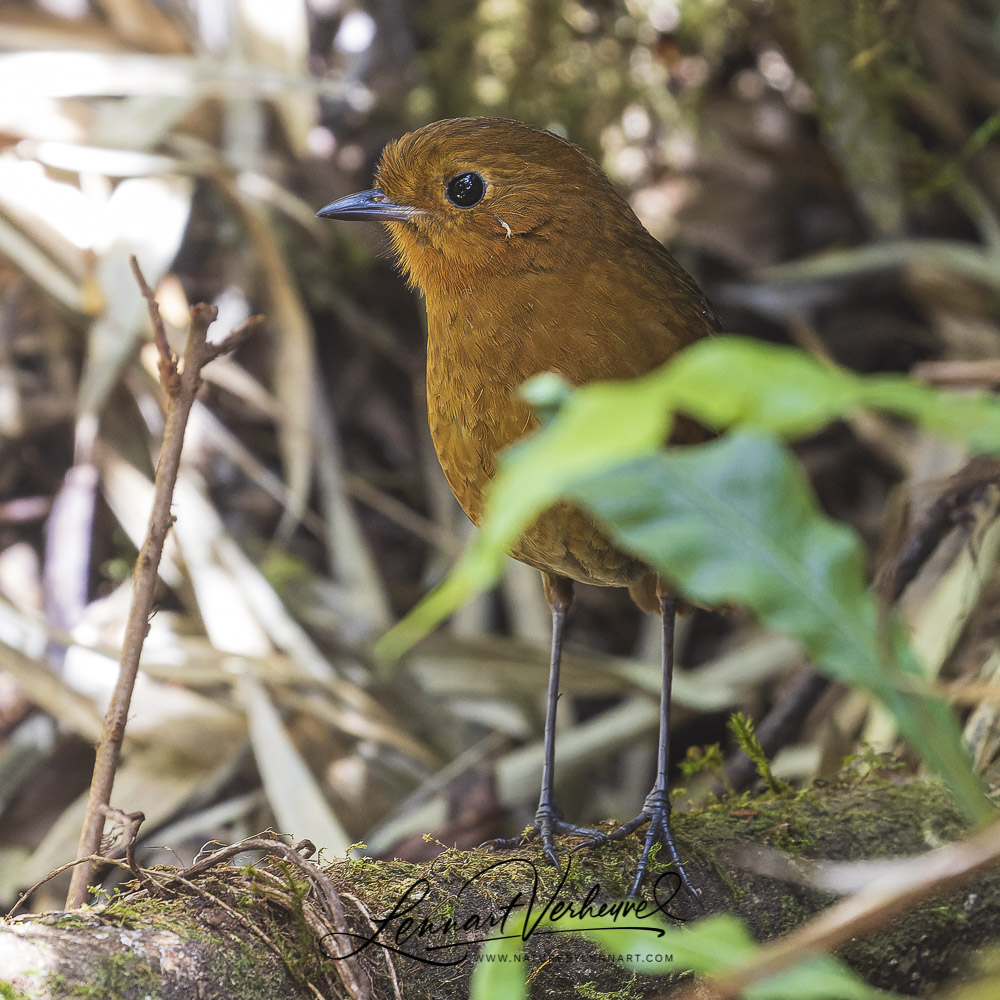
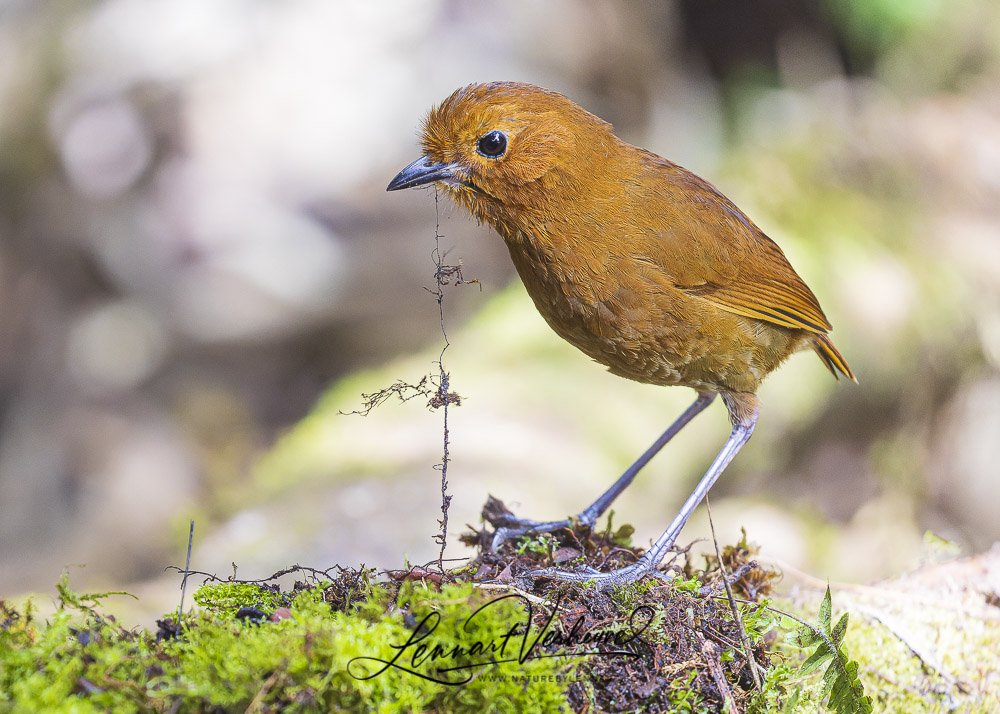
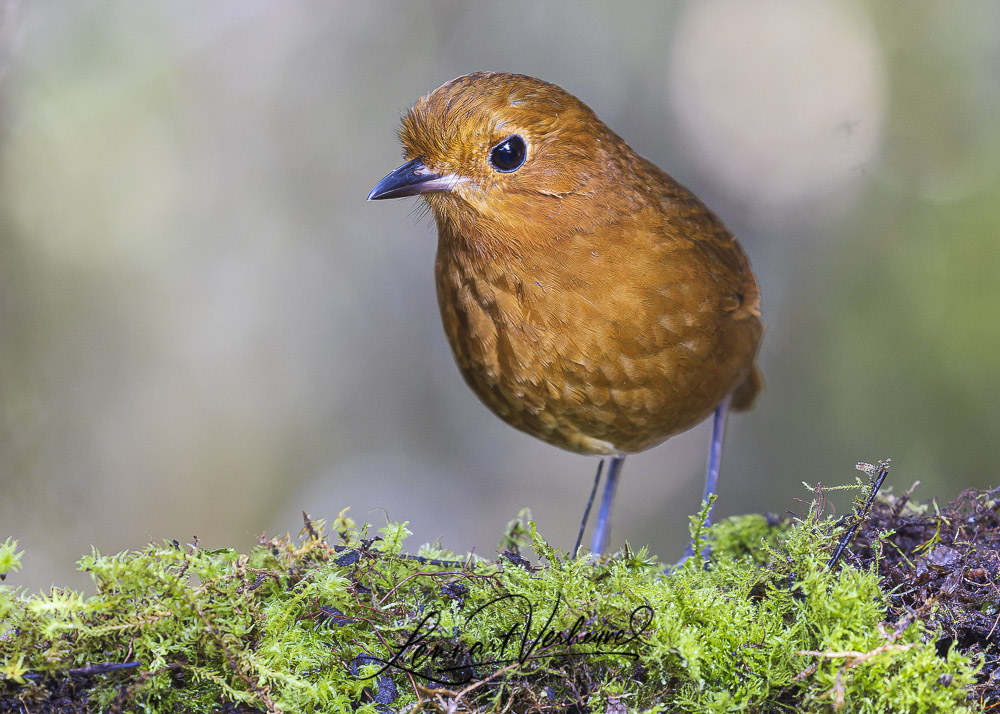
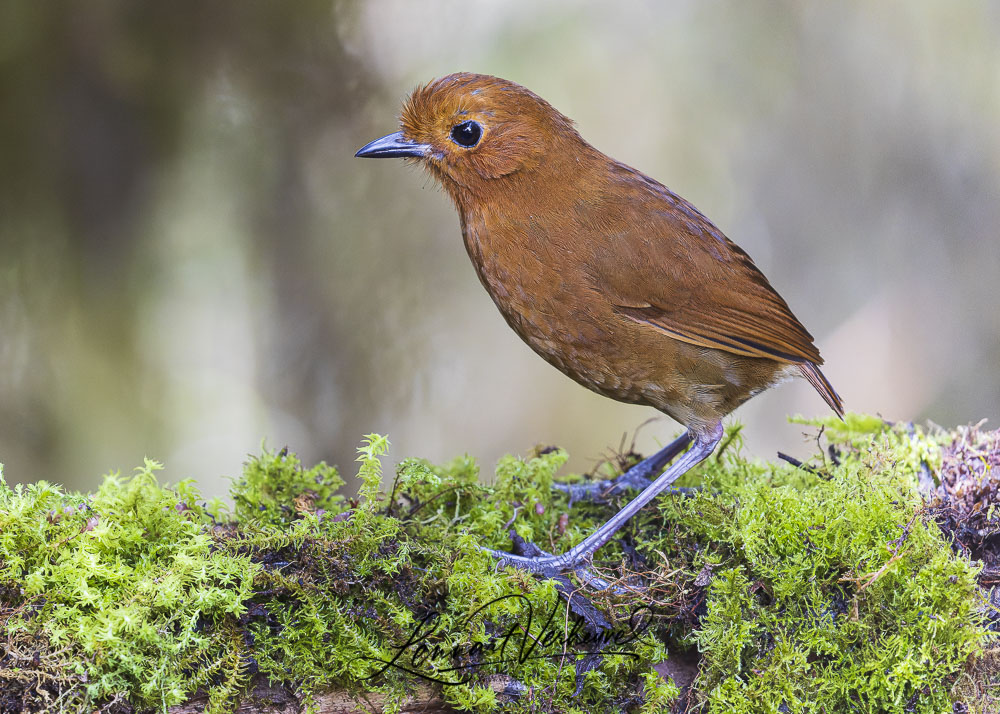
Muisca Antpitta
The last antpitta I saw really well was a Tawny Antpitta. This species is known to be not that hard to find and it turned out this was correct. In contrast to the other species, this species is more common in the open field. I had seen the species before during the trip, but in the Antisana reserve I found one that was very cooperative.
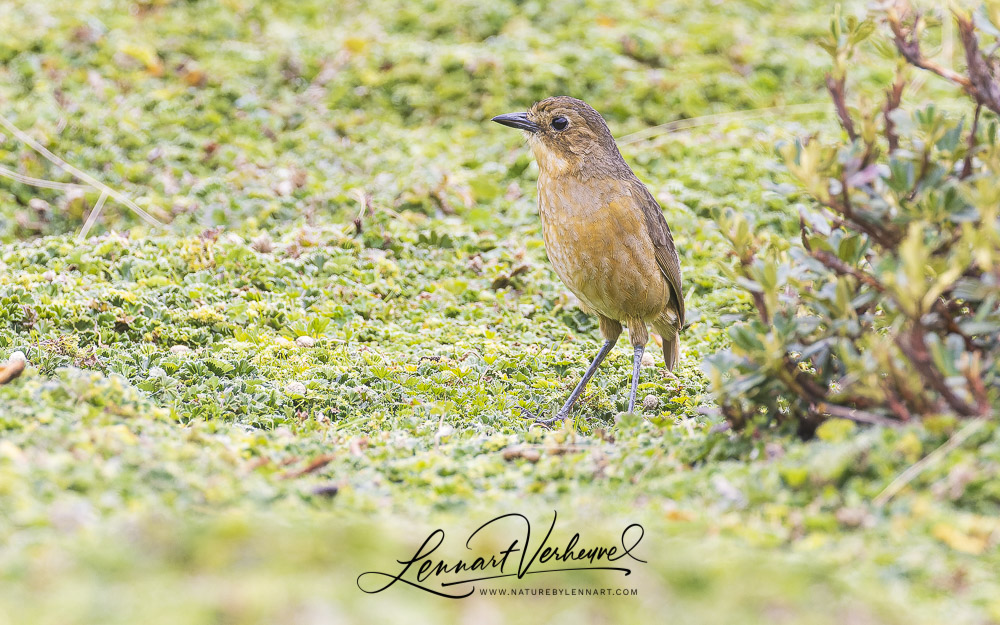
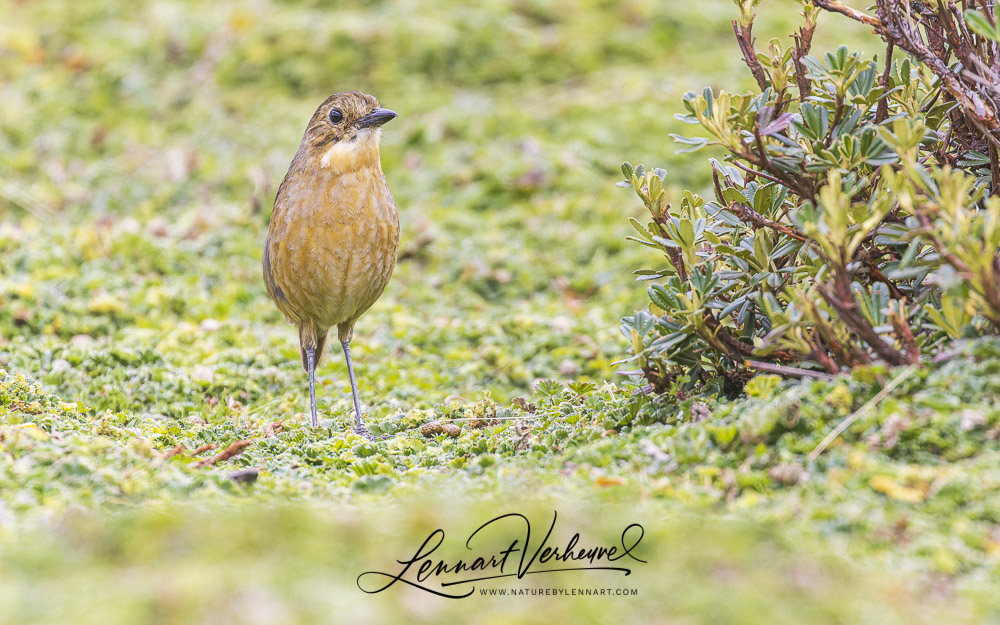
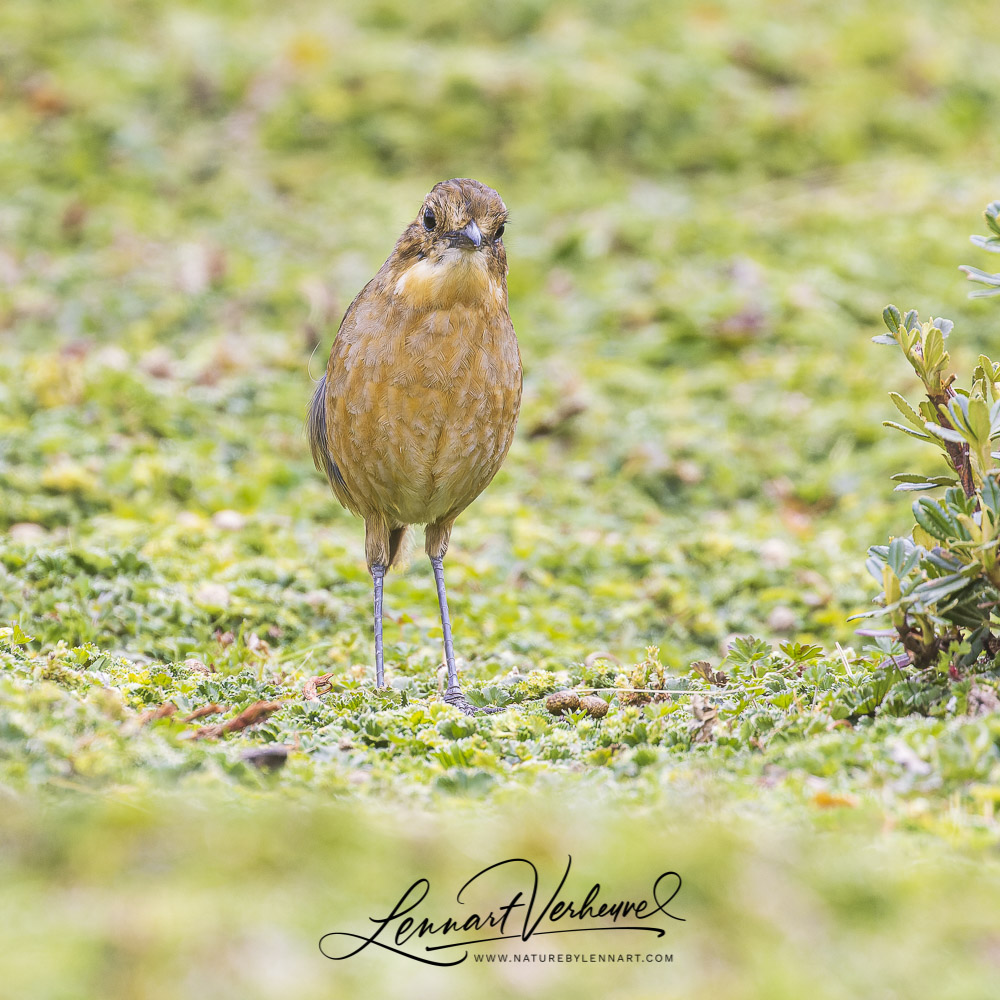
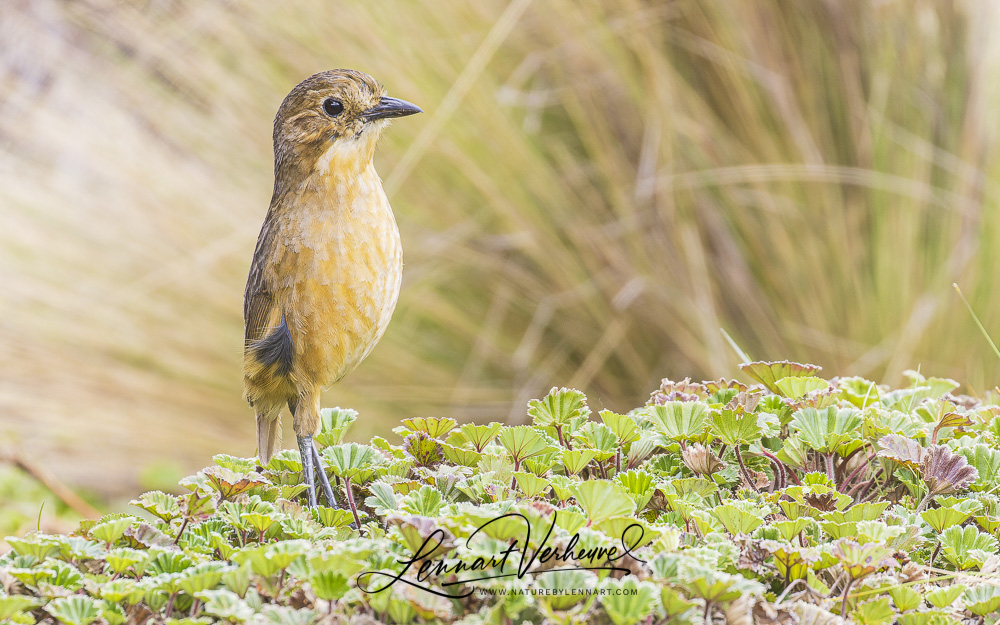
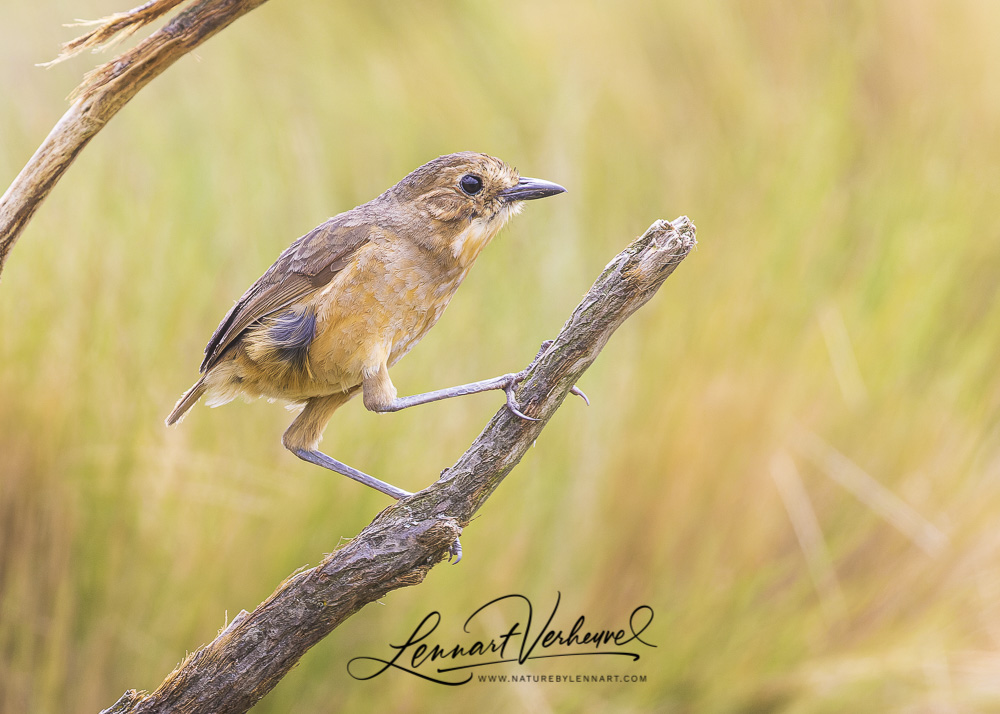
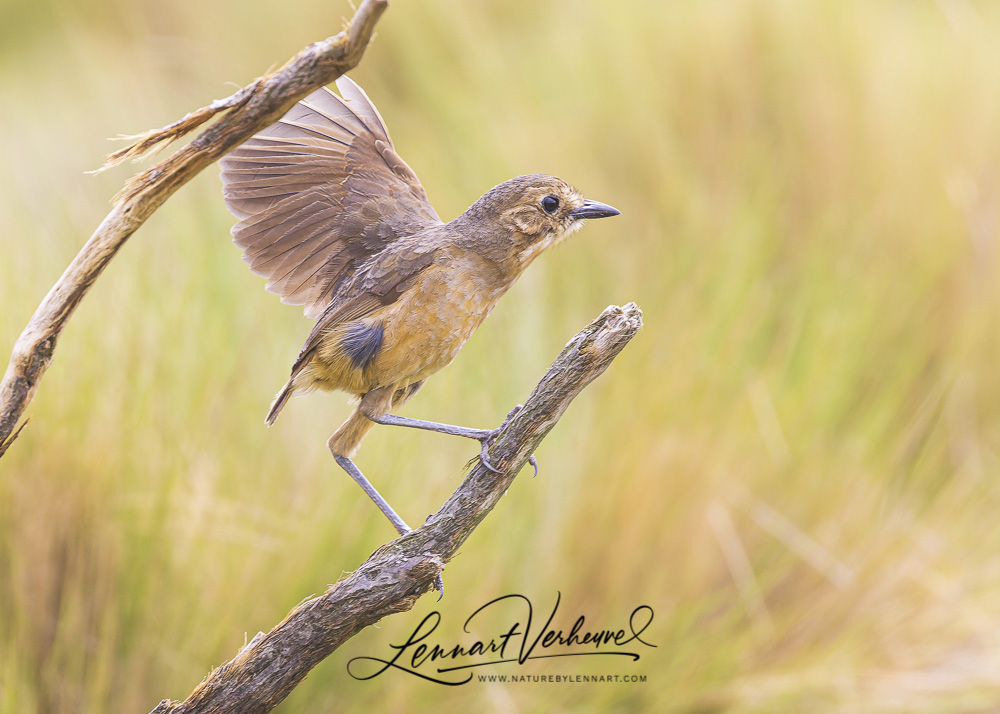
Tawny Antpitta
These were the antpittas! I very much enjoyed my sightings of this wonderful family of birds. The shyness of the antpitta always makes the excitement of seeing them all the more great and there is an awesome diversity among them!
Want to see more of my trip through Ecuador?
Click here for a story and photos of my sighting of Spectacled Bear!
After this I would continue to Bolivia.
Read here about my sighting of one of the strangest cats in the world!
And there are those days when everything goes right!